Solo travel in Japan: The complete guide
Some links in this post are affiliate links, which means I earn a small commission if you book through them, at no extra cost to you. This support helps keep this site running, the suitcase wheels spinning, and lets me keep writing ultra-detailed travel guides that are free for you to use to plan your next adventure.
Planning a Japan trip alone might seem intimidating for first-timers, but solo travel in Japan is safe, more affordable than you might expect, and extremely rewarding.
Considering a solo trip to Japan but not sure where to start? You’re in the right place.
My recent four week Japan trip firmly secured the country’s spot in my list of the best solo travel destinations around the globe. And as a full-time solo female traveller with more than 60 countries stamped in my passport, I don’t say that lightly!
This is a country where you can walk from your hotel to a convenience store for a midnight snack and feel completely safe, where solo dining is so common that restaurants have one-person booths with privacy dividers so you can watch Netflix in peace, where the trains run like clockwork and can zoom you from ultra-modern mega cities to ancient temple towns at 320km/h.
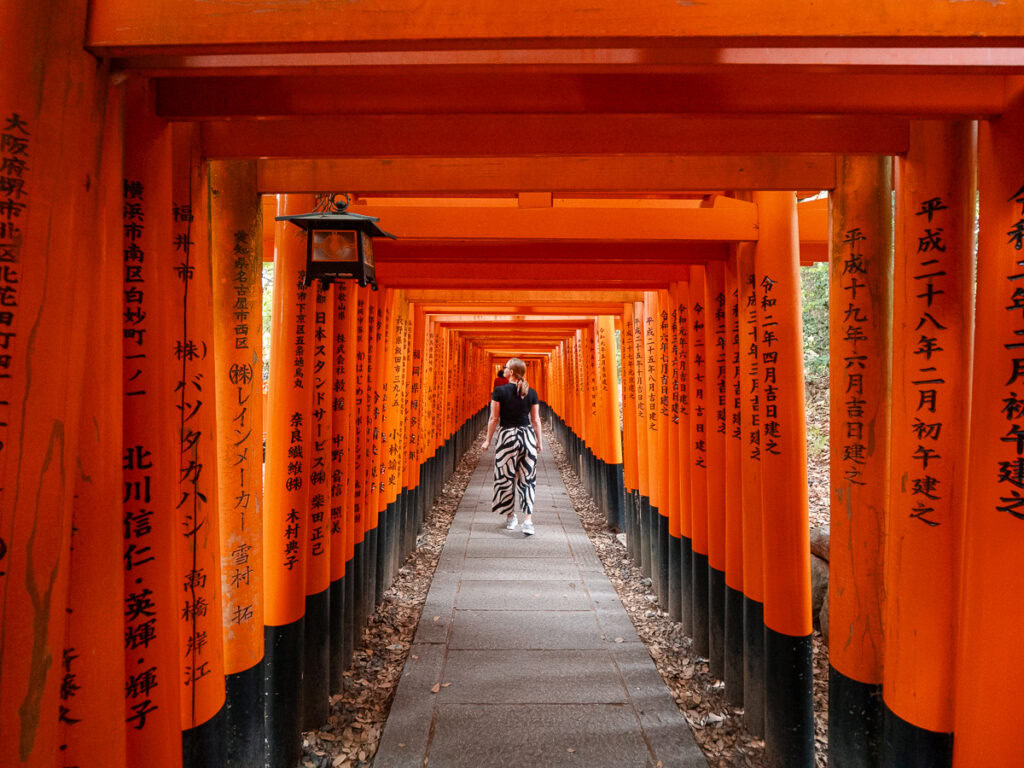
I’m not going to lie to you though, solo travel in Japan isn’t exactly easy. The transport network is bewildering at first, the language barrier is so real, and the slightest cultural misstep could result in disappointing looks from elderly locals that will haunt you for years to come.
But the good news is that through trial and error (and I mean a lot of error) across my two visits to Japan, I’ve learnt all the best tips and tricks that will take your solo trip to the absolute next level, and I’m sharing them all in this comprehensive guide to solo travel in Japan. From realistic safety advice to solo-friendly accommodation and tours, and from honest budget breakdowns to life-saving navigation tips, this guide covers everything you need to know before you hit Japan solo.
Whether you’re a seasoned solo traveller finally heading to the Land of the Rising Sun or you’re about to take the plunge and travel alone for the first time, this guide will set you up for a smooth, stress-free and spectacular trip.
Table of Contents
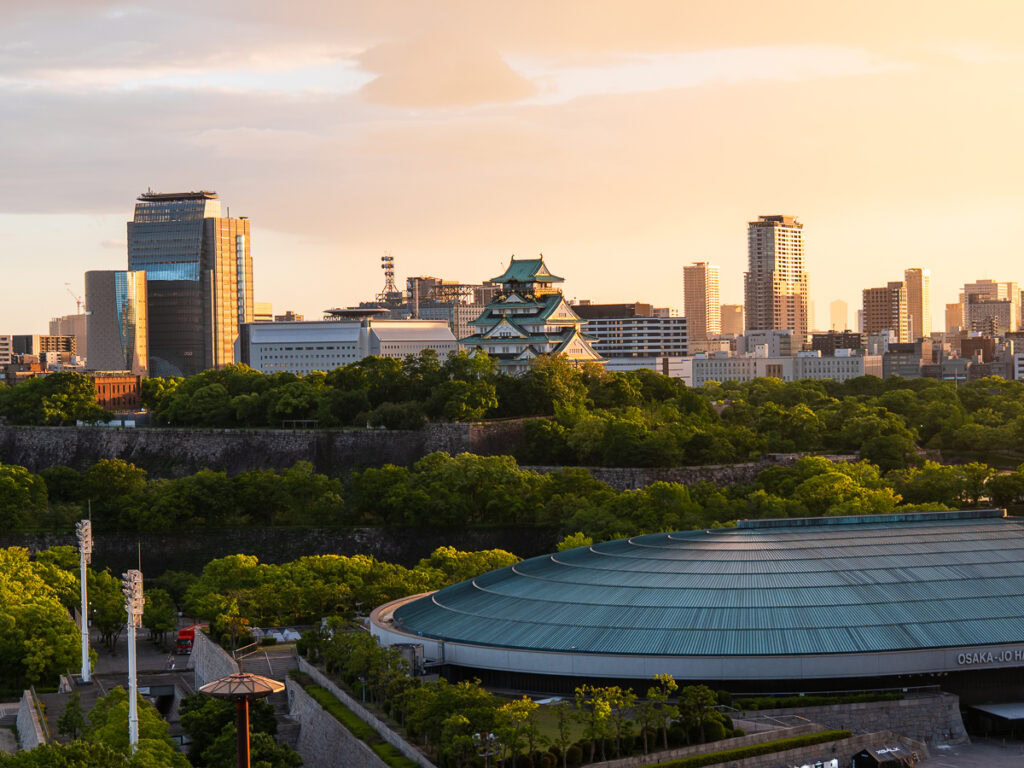
Why travel solo in Japan?
Japan’s chaotic cities and complex cultural etiquette might make it a bit daunting as a solo travel destination, but it’s one of the safest, most diverse and most rewarding places to explore alone. Here’s what makes it the ideal place for solo travellers.
It’s one of the safest countries on the planet
Japan has one of the lowest crime rates in the world, and as a solo female traveller I felt more comfortable here than anywhere else I’ve visited.
Women can walk alone at night in big cities, you can leave your laptop on a table outside a café while you go to the bathroom and it’ll be there when you get back, and many locals will go out of their way to help you if you look confused or upset.
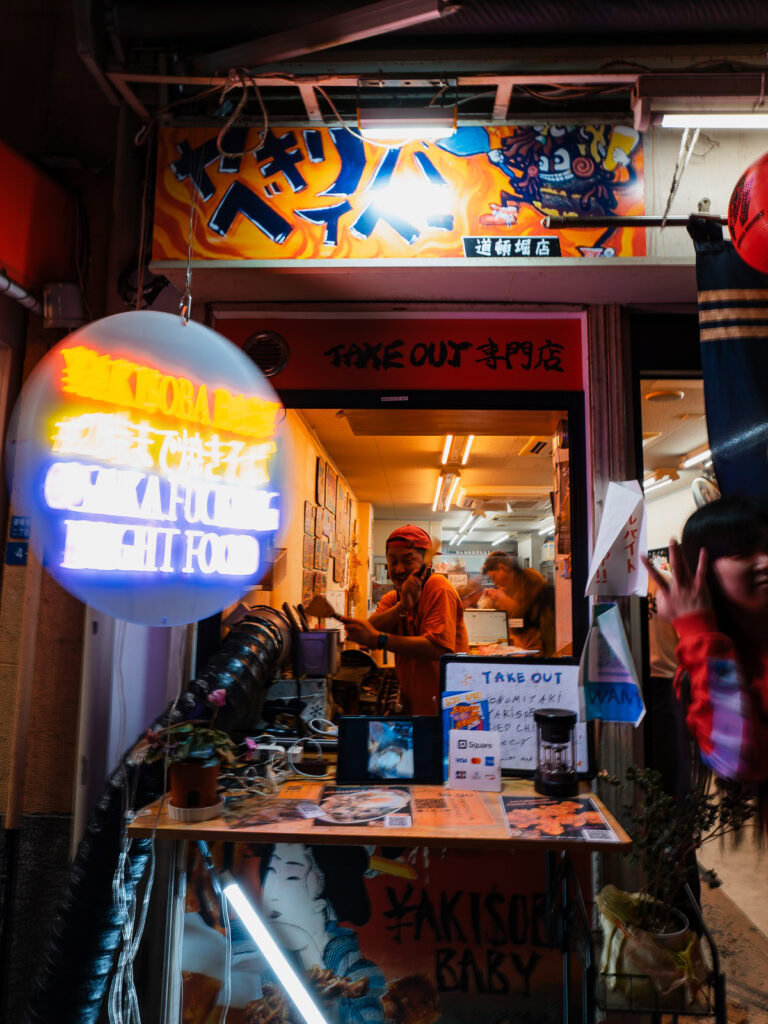
It’s a solo-friendly society
Doing things alone is completely normalised in Japanese society, with solo booths at restaurants, capsule hotels, even one-person karaoke cubicles!
Public transport is much easier with just you to worry about
The public transport network here is world-class, extremely punctual and able to whisk you across the country at 320km/h. The average train delay nationally is 54 seconds 🤯
But Japan’s efficiency can go from being a total dream to being a logistical nightmare if you’ve got travel buddies who can’t stick to a schedule, always walk the wrong way with confidence, or rely on you to do all the research and then complain when there’s a mishap. Also navigating Shinjuku Station with a boyfriend is just a break up waiting to happen.
Travelling solo means no constant checking if your friend’s following you, no missed trains because someone else forgot to top up their IC card, and no repeat questions about what stop you’re getting off at.

Soak up the serenity or get amongst the chaos
Japan is a country of contrasts, where peaceful parks and ancient temples are just minutes away from epic skyscrapers and neon-lit nightlife districts. When you’re solo you get to choose your own adventure each day and set your own pace.
Total freedom to shop, eat or game as much as you want
Want to spend six hours searching for the perfect Sukajan jacket, or eat ramen five times in one day, or play Dance Dance Revolution until you get a perfect score on Level 10?
Solo means no compromise, no judgement, no need to worry about anyone’s priorities except your own.
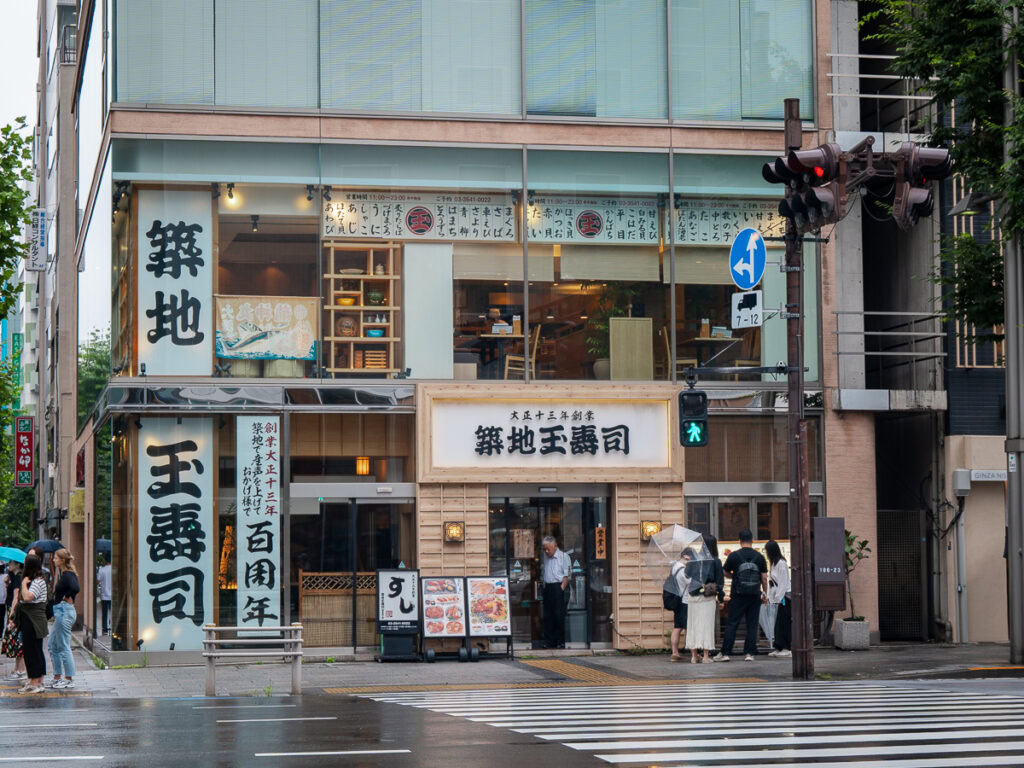
Book tours if you want to be solo-but-not-solo
If you want to mix solo time with meeting new people, there are plenty of day tours or longer group trips you can book.
On my last trip I did the two week One Life Adventures Japan tour (sandwiched by solo time on either side) and loooved it!
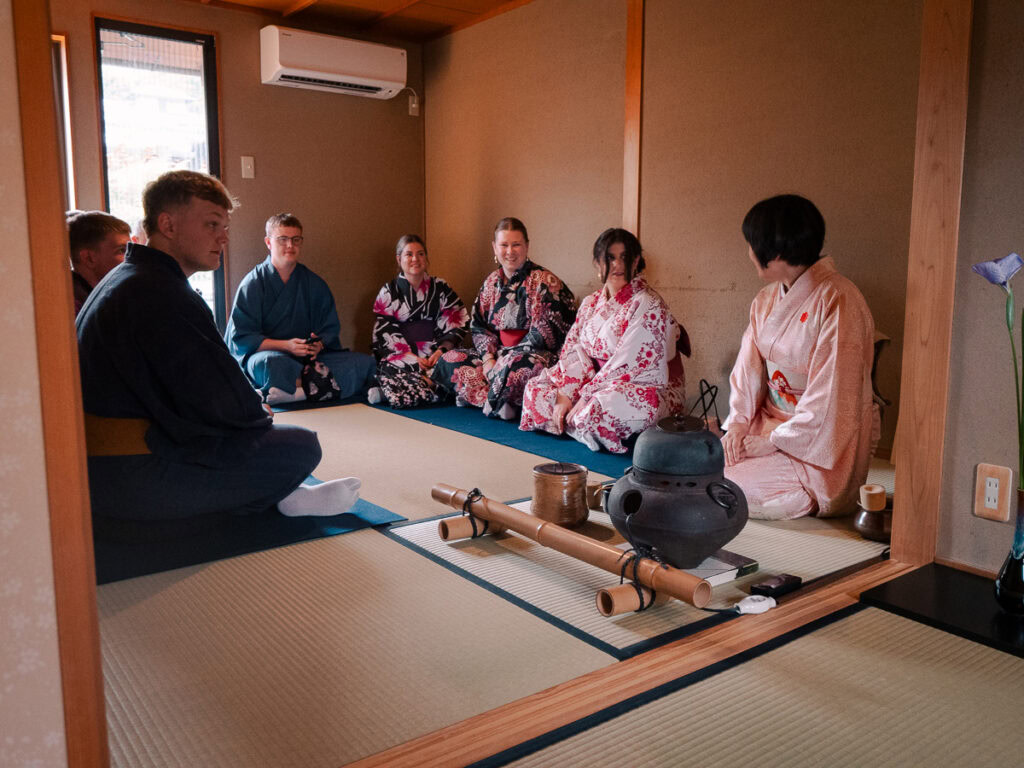
You can wear headphones!
A criminally underrated benefit of solo travel, especially in hectic cities like Tokyo and Osaka, is that you can wear headphones to block out the chaos around you without offending any travel buddies.
Obviously situational awareness is also vital, so switch any noise-cancelling headphones to ambient mode or take one ear off when you’re crossing roads or walking around at night.

The downside of solo travel in Japan
Butttttt no destination is perfect, and I have to admit that neither of my solo Japan experiences were 100% smooth sailing. Here are some of the things that caught me out, so you can prepare better than I did.
You have to do alllll the planning
And there is so much of it 😭 where to go, how to get there, what to book in advance, how to buy train tickets, every travel decision is up to you (yay!) but every travel decision is on you too (nooo).
No one to split the admin with, no one to cry to when something inevitably goes wrong.
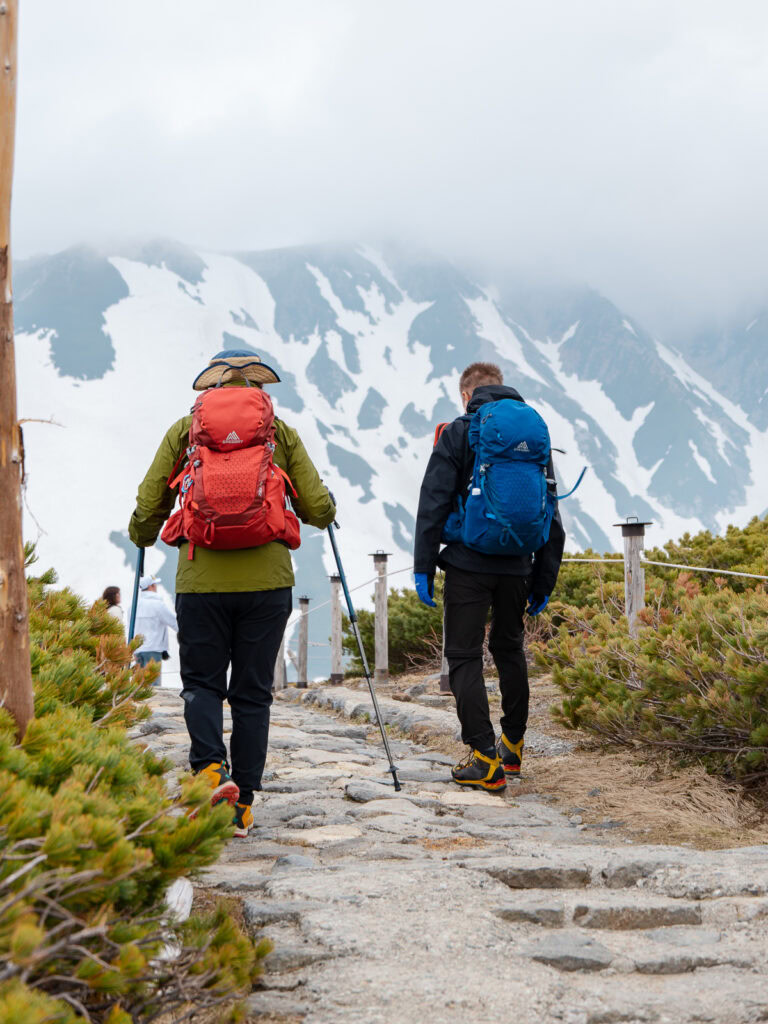
Some experiences just hit different when you’re with people you love
Let me preface this by saying I adore solo travel more than anything. I am a firm believer that doing something solo is better than not doing it at all, and I genuinely *hardly ever* have moments where being solo feels like a consolation prize.
That said, Japan has a fair few activities which are definitely more fun when you’re with people you already know.
Dressing up in a kimono was much more enjoyable when I did it on my One Life tour, a Kendo class is far more satisfying when you can smack the shit out of a friend instead of a stranger, and karaoke with your favourite travel buddies is unbeatable.

Good luck getting decent photos of yourself
There will always be someone around to take some shots for you, but being solo means waiting patiently for the right person to ask, you might only get one or two snaps, and you can’t really request a do-over or a different angle.
Getting to famous photo spots first thing in the morning with a trusty tripod is your best bet for this one, because once the crowds hit (8-9am at most popular places in Japan) you’ll have no chance.

Ryokans, temples and some hotels might not have single rooms
Many accommodation providers will offer single rooms for solo travellers but this isn’t always a given, so if you’re booking late or if you’ve got a specific place you want to stay at then you might end up having to pay the rate for a double room with no one to share it with.

You’ll need to recharge your phone at least once a day
Maps, translations, taking photos, Spotify for music or podcasts while you’re exploring, Googling something every 20 minutes because you don’t know whether you can eat on the train (if it has a tray table then yes, if not then no) or the correct way to dip nigiri into soy sauce (fish-side facing down), your phone battery will be absolutely hammered when there’s no other phone to share the workload.
A high capacity portable power bank is a solo travel essential.
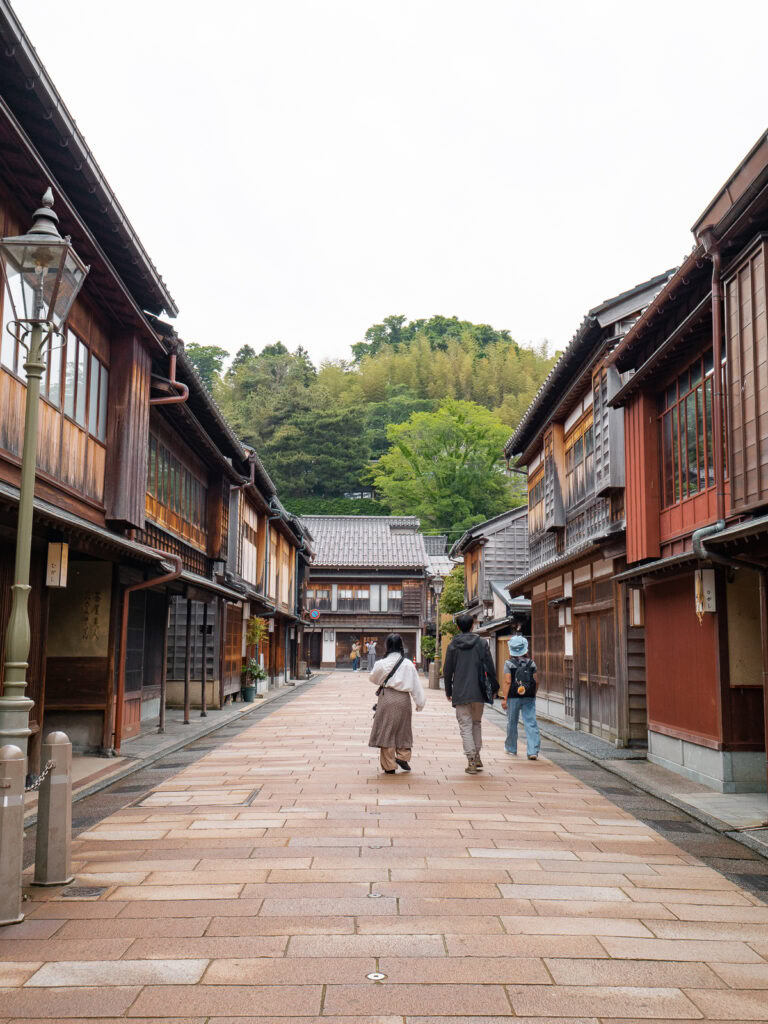
Onsen, theme park lines post-lockers and other no-phone-allowed places can be incredibly boring
Maybe this is a me problem, but being alone without my phone for more than a few minutes feels like mental torture 🫠 I guarantee that’s when I’ll have a world-changing idea but I’ll forget it five minutes later because I had nowhere to write it down.
Onsen are better with buddies to (quietly) chat to, theme park lines after you’ve locked your phone away feel twice as long when you’re solo, and god forbid your phone and power bank both die and you have to survive a long-haul train journey with no electronic entertainment, like they did in the olden days.

Is Japan safe for solo female travellers?
The short answer is yes, Japan is one of the safest countries in the world for solo female travellers.
Violent crime is incredibly rare, petty theft is barely a concern even in the busy cities, and Japanese culture hugely emphasises social harmony, which includes respecting people’s space and belongings.
I felt safer walking around Tokyo solo in the middle of the night than I do in broad daylight in many other places I’ve visited, it’s not uncommon to see people leave phones and laptops unattended at cafés even on the outside tables, and verbal harassment like catcalling or heckling is pretty much non-existent.
But (there’s always a but!), travelling alone as a woman always requires additional considerations and Japan is no exception. Here are a few key things to know.
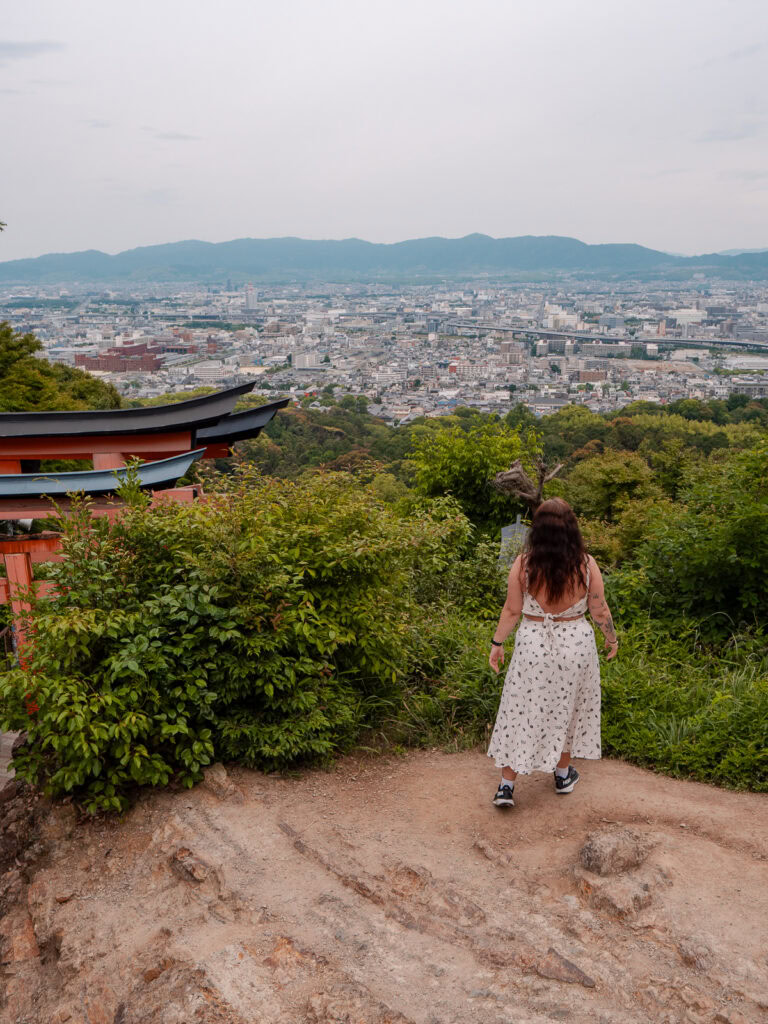
Sexual harassment on trains does happen
While overall crime is low, one recognised issue in Japan is men groping women on overcrowded trains, or “chikan” as it’s known locally. This is why you’ll see women-only carriages on some train lines (usually during peak commuting hours), use these carriages when they’re available or avoid rush hour if you can.
Sadly more than 40% of women in Tokyo have experienced this at some stage and it seems to be a particularly common offense against high school students (which is horrifying), because Japan’s culture of respecting people older than you makes teenage girls and young women less likely to cause a scene. This isn’t to minimise the issue, but for perspective: train harassment affects women in many busy cities around the world, with stats showing up to 70% of women in some parts of France and 33% of women in the UK have experienced it.
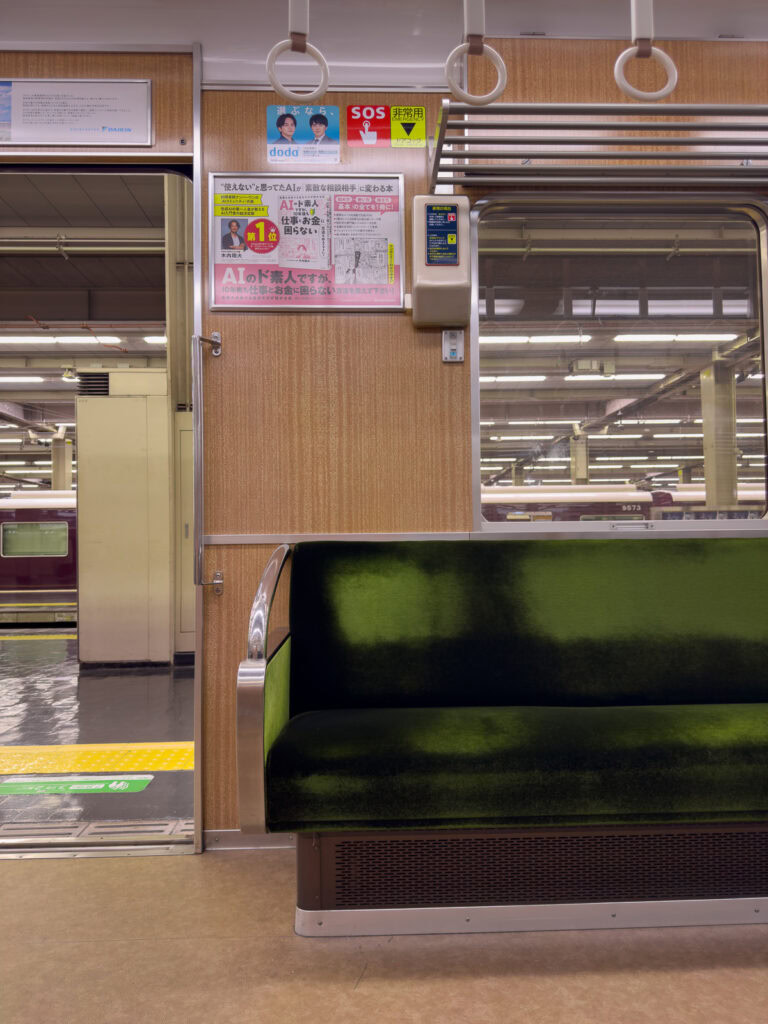
There’s no doubt that it’s a significant societal problem that is a disgusting blemish on Japan’s otherwise excellent safety record, however it’s important to know that Japan’s trains remain very safe overall compared to most places, particularly outside of the busy rush hour, and foreign tourists generally aren’t the target because they’re not conditioned to prioritise social harmony in the same way young Japanese women are.
Again though, I don’t want to trivialise this as a non-issue because it’s a serious form of harassment. If something does happen then the recommended thing to do is to grab the guy’s hand, hold it up and yell ‘chikan!’ before pulling him off the train at the next station to alert station staff.
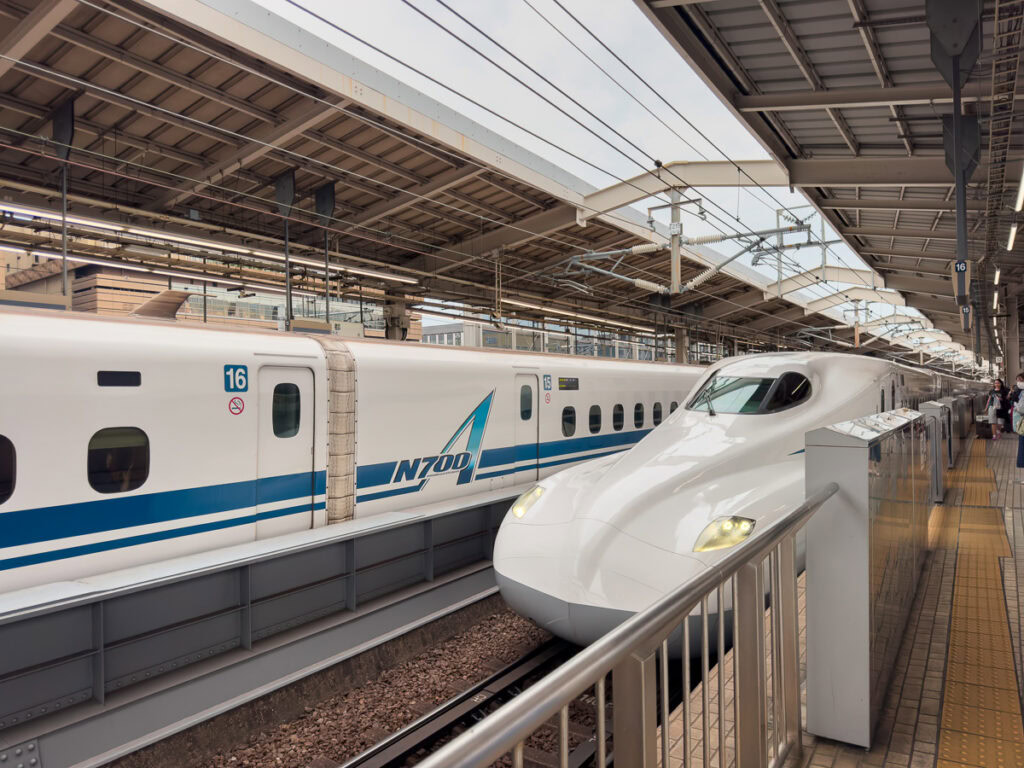
Japan’s drinking culture will attract certain characters
Nightlife districts get rowdy after hours, and the culture of politeness and respect gets diluted with drunk locals and foreigners alike. Take the usual precautions for any night out and don’t miss the last train home!
Don’t let the safety lull you into bad habits
Petty crime is super rare in Japan, but that doesn’t mean you should go around with an unzipped bag or your phone sticking out of your back pocket. Keep your belongings secure and stay alert, mainly so you don’t forget to do so when you’re travelling elsewhere.
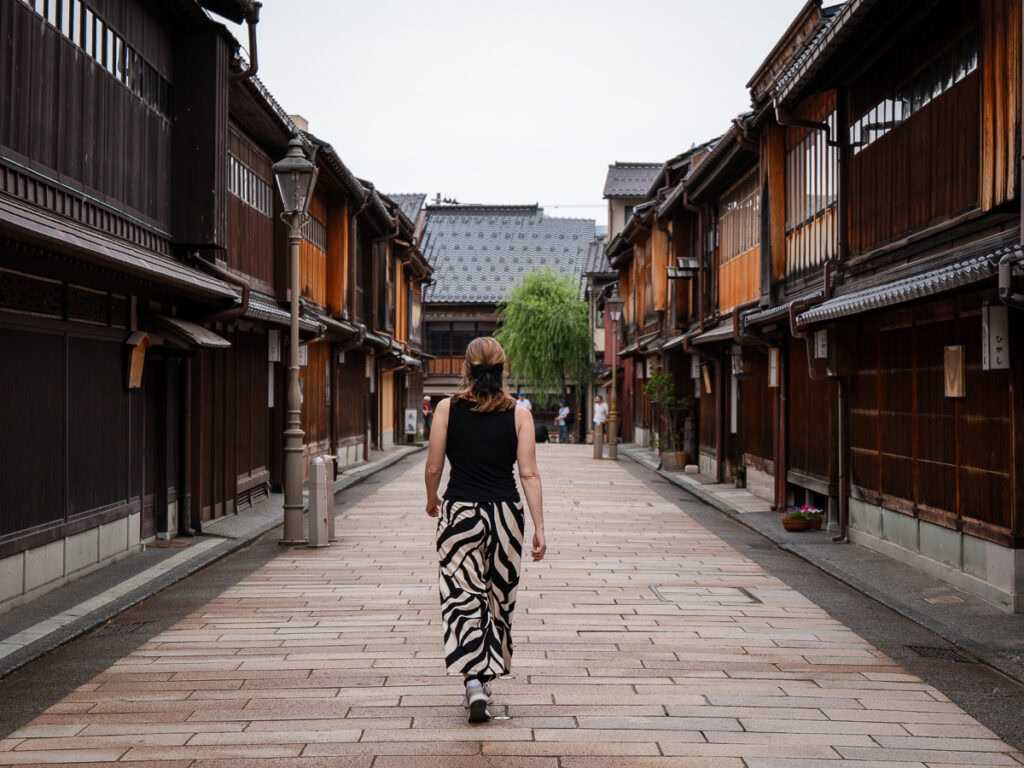
Book women-only capsule hotel rooms
Most capsule hotels in Japan only have gender-segregated floors anyway but this always makes me think that a man booking a mixed room miiiiight have done so on purpose.
Women-only rooms might be a bit more expensive due to demand, but it’s worth it for the additional security.
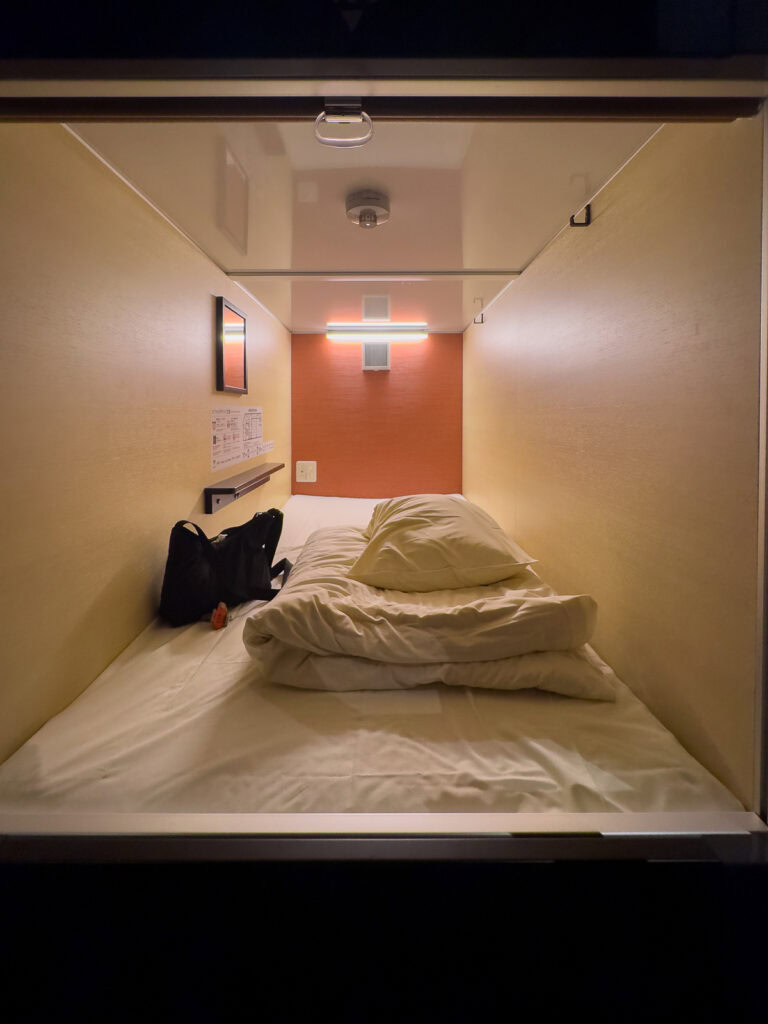
Experiences differ based on appearance
As a white-passing woman I’ve never felt unsafe or even uncomfortable in Japan, but Japan is a very homogenous country with a complex perception of race and skin colour, and I’ve heard that women of colour may experience microaggressions.
Get comprehensive travel insurance
Quality medical care can be costly in Japan, so having a decent travel insurance policy is a must. I got sick at the end of my last trip and ended up spending $800+ on a doctor’s appointment, medication and two nights in a hotel (I was staying in a hostel but my Cover-More travel insurance covered a private hotel room for me to recover).
Read my guide on how to find the best travel insurance policy for your trip.
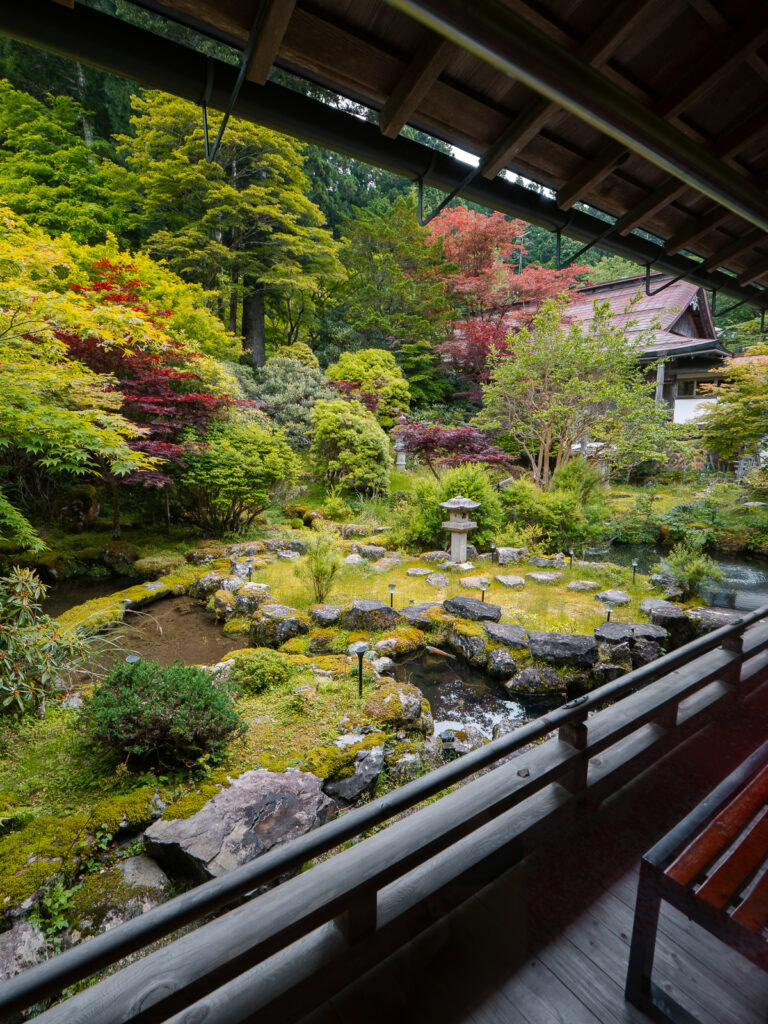
How to plan a solo trip to Japan
I have a confession: Even though I desperately wanted to visit Japan, I actually put off the trip for a number of years because the amount of upfront planning required was so off-putting.
It’s true that Japan does take more advance preparation than other solo travel destinations, but here’s a simple breakdown to keep your trip planning manageable.
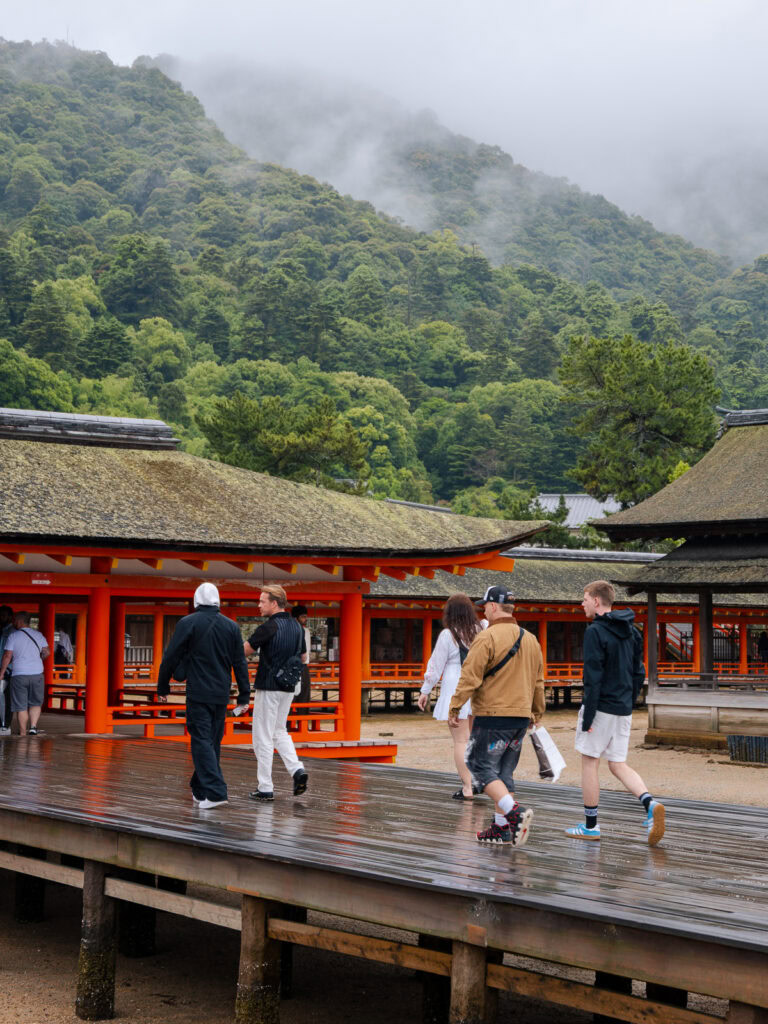
When to visit Japan as a solo traveller
When to go really depends on your priorities, but there are some key seasons and dates to avoid, to align with, or to just be aware of:
- Golden Week (late April-early May): Four national holidays within seven days, domestic tourism surges and prices skyrocket. Avoid if possible!
- Cherry blossom season (late March-early May): Very high on my travel bucket list but also one of the most hectic times to visit Japan, for obvious reasons. Massive crowds, inflated accommodation, unpredictable timing of the bloom due to climate change. I’ve had friends go in recent years and say that it wasn’t worth it.
- Summer heat & humidity (July-August): Summer in Japan can be hot, muggy and uncomfortable, particularly in big cities where concrete traps the heat. If you’re not used to this climate then avoid it because the weather will suck your energy.
- Autumn foliage (October-November): Stunning colours with more manageable crowds than cherry blossom season, but you still need to book in advance.
Both of my Japan trips were in May (after Golden Week) through to mid-June and I really rated it! Crowds were typical (not as bad as holiday periods), the weather was a lovely mild temp all day and night, we did have some grey and rainy days but not to the point where it negatively impacted our trip.

Visa requirements
Citizens from the UK, US, Canada, Australia, New Zealand and most European countries can enter Japan visa-free for up to 90 days as tourists, here is the full list of countries.
If you need to apply for a visa, Japan can be very strict with visa applications and decisions can be inconsistent and unfair, with no explanation given for rejections. Unfortunately I saw this issue with my last trip when our legendary Sri Lanka tour guide Rihas couldn’t join us on our Japan reunion tour, because his visa was declined just days before the trip for no apparent reason.
If you need a tourist visa then consider using a visa service who can apply for you, this costs extra but at least they’ll triple check that all the correct info has been provided. If Japan still rejects your visa then you might be the unlucky person who caught the decision-maker on the wrong day 😞
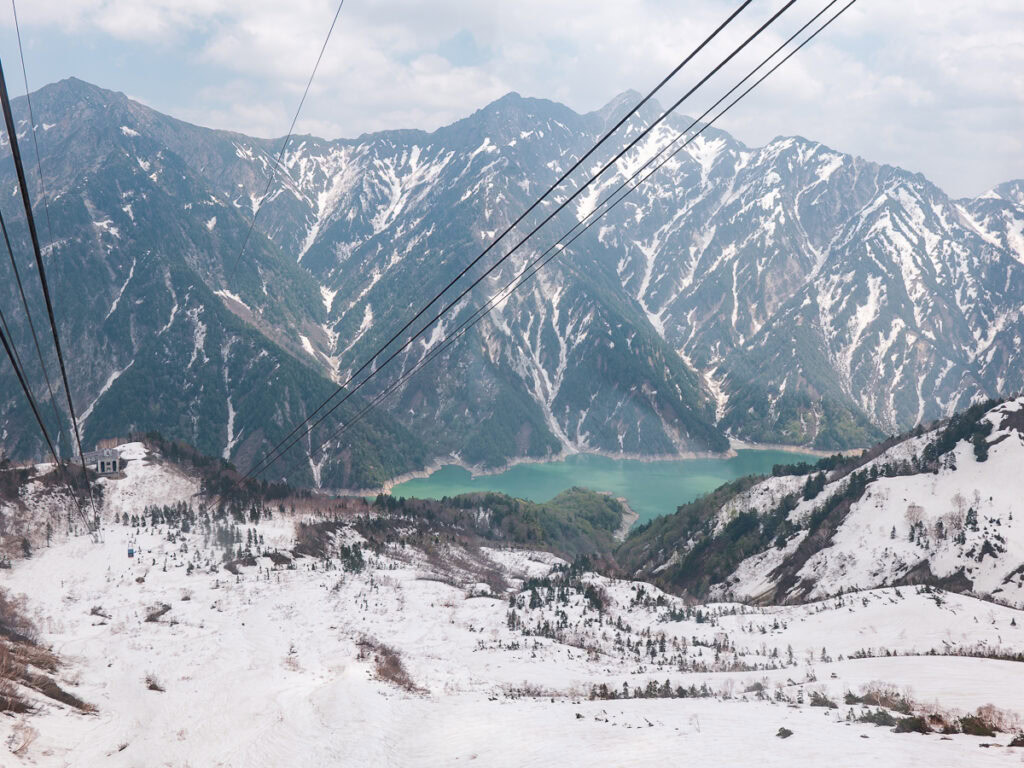
Choose your airports so you can book flights
Tokyo has two main airports: Narita (NRT) is about an hour from the city via express train services, Haneda (HND) is closer to the city but has more domestic traffic than international. Some airlines operate from both airports, so triple check your ticket to make sure you know which one you’re flying into and out of.
Osaka’s Kansai International Airport (KIX) is the other major international hub for long-haul flights, and provides better access to Kyoto and Hiroshima.
If you want to maximise your time and money in Japan then it might suit you better to fly into Tokyo and out of Osaka or vice versa, this avoids an expensive bullet train journey to get back to your starting point or having to spend an extra night in Tokyo before you fly out.
✈️ Read my tips on how to find cheap flights to try and nab the best deal.
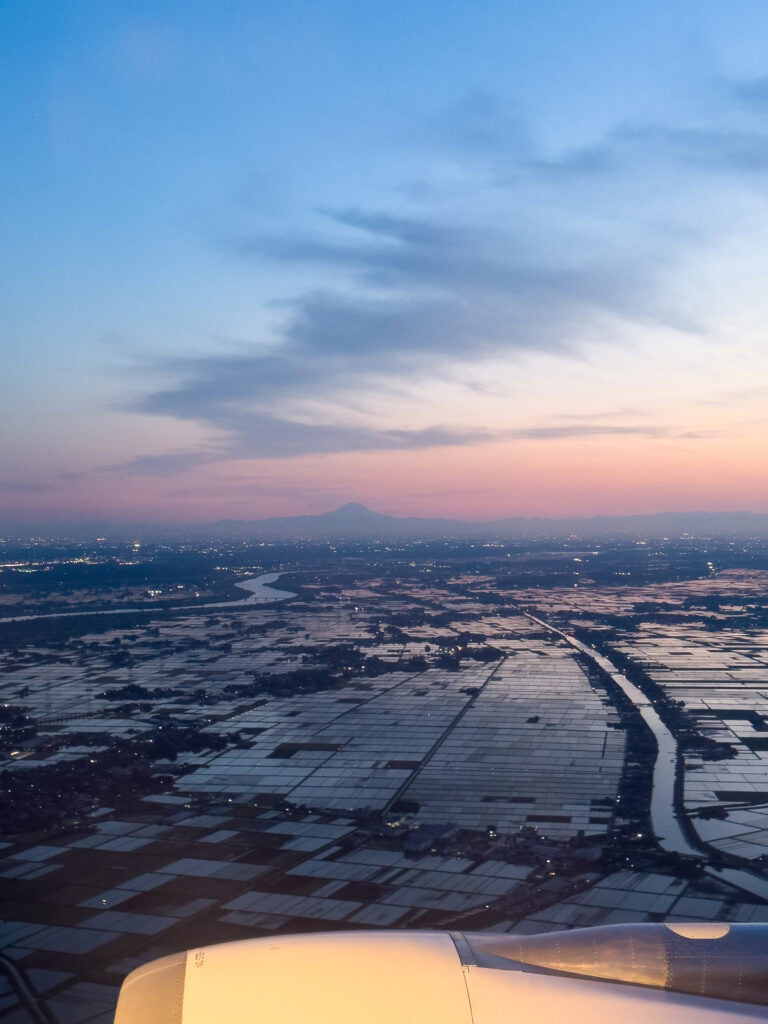
JR Rail Pass: Worth it or not?
Probably not these days! The JR Pass used to offer incredible value and was a no-brainer for most week-or-more Japan trips, but in late 2023 there was a price increase which made the regular 7-day pass 70% more expensive 🤯
If you read any blogs saying that the JR Pass is a must-have then I can almost guarantee they’re old content and haven’t taken into account those price hikes.
The JR Regional Passes can still be worthwhile if you’re spending 3+ days in one specific area and plan to use the Shinkansen to do day trips further afield, but you really need to look at your exact itinerary and calculate how much it’d cost to compare.
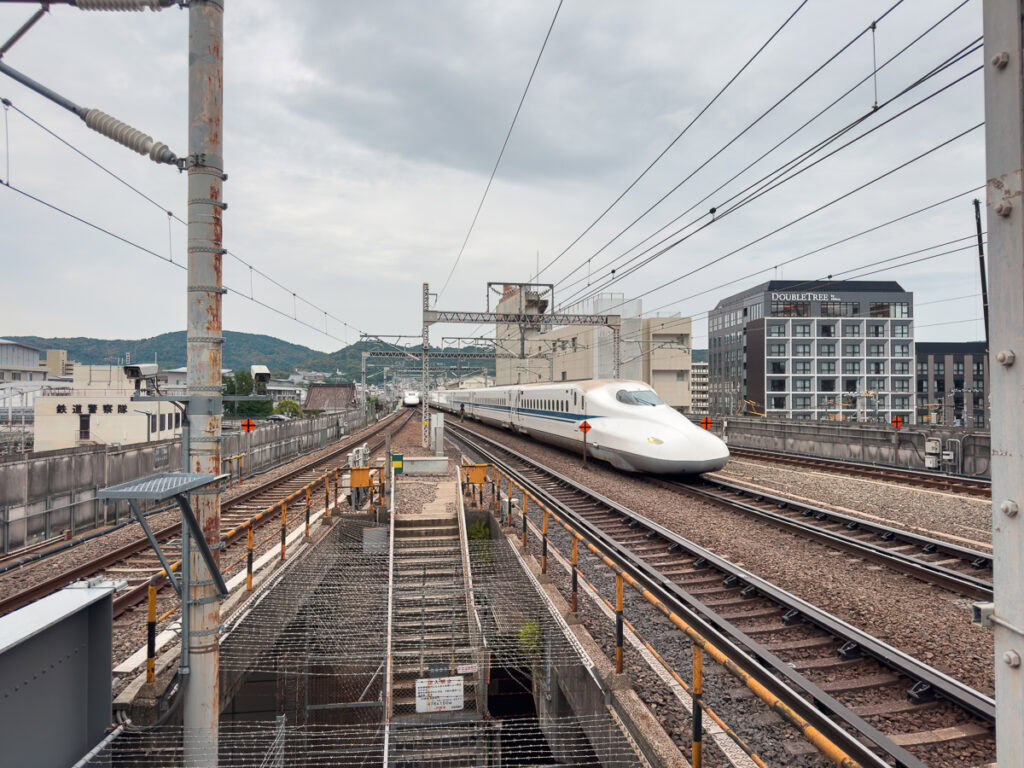
Book accommodation early
Solo-friendly sleeping options like capsule hotels, single rooms in hotels and affordable ryokans get snapped up early, especially during busy travel periods like cherry blossom season or holidays.
Accommodation in Japan was actually much better value than I expected when I looked initially, but my plans changed quite late in the game and I found that booking one week out I was stuck with either sub-standard capsule hotel/hostel choices or nicer places that were out of my budget.
Don’t assume you’ll find somewhere affordable last minute, book a couple of months in advance (more during peak season).
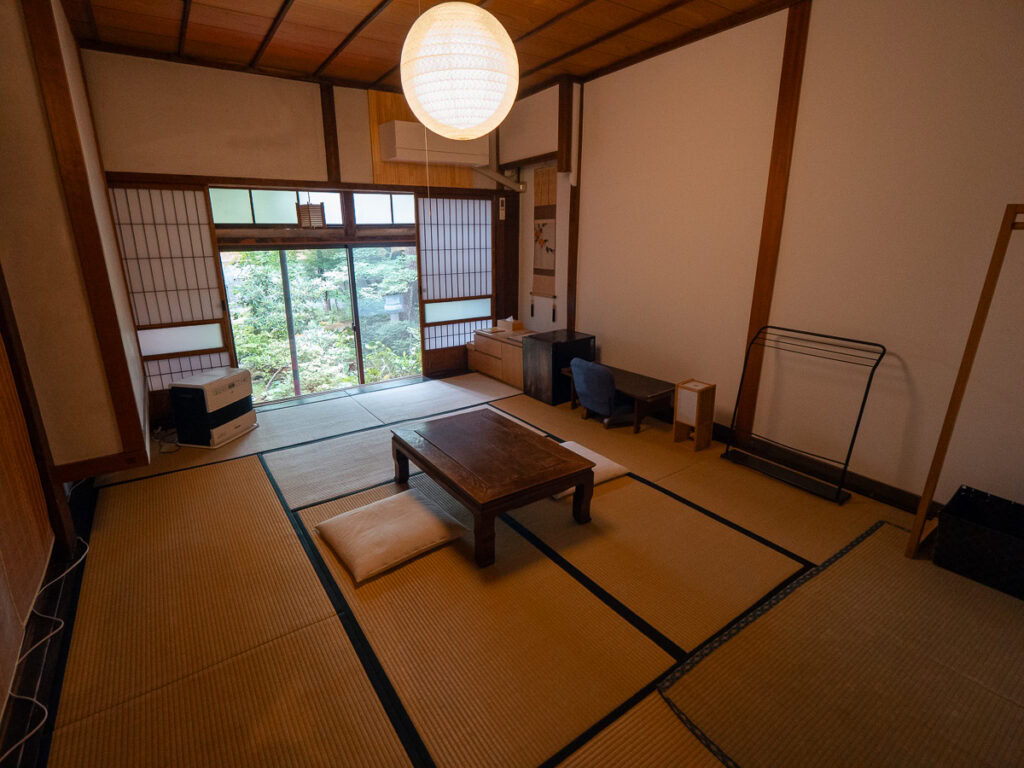
Get an eSIM
Mobile data is a must in Japan, I don’t think I’d survive a day using Tokyo’s transport network without access to live maps! You can download maps in advance for offline access but these don’t show real-time public transport info and route guidance.
I almost always use eSIMs when I travel these days, they’re typically a lot more affordable than international roaming rates (if you find the right one) and that way you can keep your home SIM in your phone to receive calls and texts.
I’ve got a super detailed Japan eSIM guide comparing 150+ options from 30+ providers, but the best value ones are (all in USD):
- For most travellers: 20GB for $13.99 with MobiMatter
- For most high data users: 50GB for $29.99 with MobiMatter
- For unlimited data (2GB high speed per day before throttling): 30 days for $39 with Voye
- For unlimited data (5GB high speed per day before throttling): 30 days for $49.88 with Supera Link
- For low data users: 3GB for $3.60 with SIMOVO
- For ultra-high data users: 300GB for $65 with Roamify
- For long trips: 60GB over 90 days for $45.99 with MobiMatter
- Best eSIM for Japan, China & South Korea: 35GB for $24.99 with MobiMatter
💰 You can get extra cashback on your first MobiMatter purchase with promocode FINDINGALEXX
An easy rule to live by when choosing a Japan eSIM: Don’t pay more than $0.60-0.80 per GB for 10GB+ eSIMs or more than $1.50-$1.60 per day for unlimited data for a two week trip. For shorter trips or lower data packages up to $1.50 per GB or $1.90 per day is acceptable, but anything more than that is not a good deal.
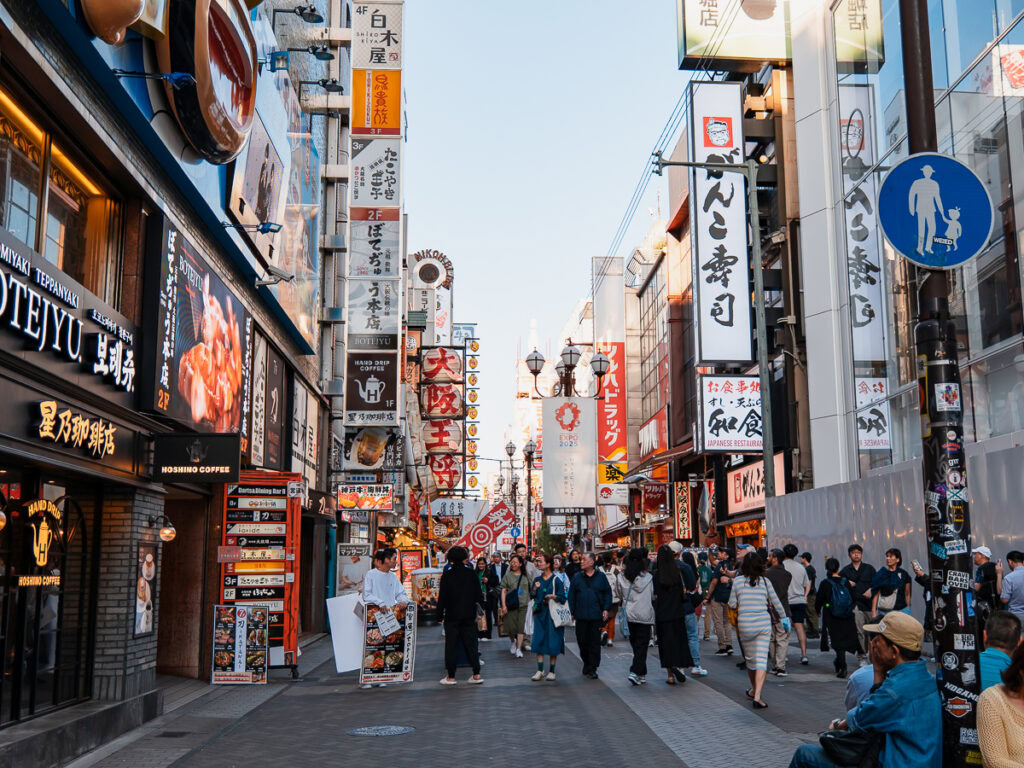
You can also get physical SIMs if your phone isn’t eSIM-compatible or if you just prefer it that way, but it’s 15-25% cheaper to pre-order your physical SIM online via Klook to pick up at the airport vs. the prices if you buy the SIM at the airport on arrival.
If your phone is locked then Japan’s nifty pocket WiFi devices are a life-saver, they’re portable routers that link your phone to data networks without needing to use roaming or change your SIM at all. It’s one extra thing to carry but better than hefty international roaming fees.
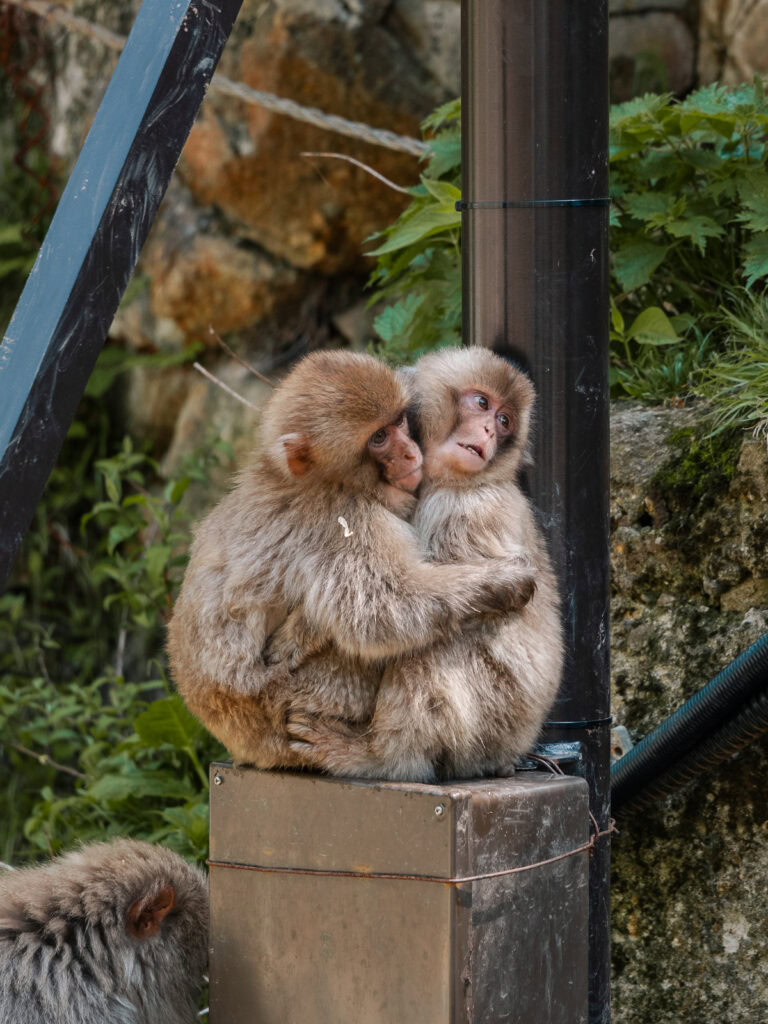
Bring a proper chip-and-PIN card and get cash out when you arrive
Japan is still heavily reliant on cash in some situations, particularly for food markets, small retailers and public transport outside of major cities, but you can always find ATMs in convenience stores to withdraw some ¥¥¥.
7-Eleven ATMs have the lowest fees, in June 2025 they charged 110¥ to withdraw 10,000¥ or 220¥ to withdraw 20,000¥ or more, whereas Lawson and FamilyMart ATMs charged 660¥ regardless of the amount.
One important thing to note is that you need a card with a PIN in Japan, if you have a chip and signature card then this might not work at train stations or ATMs. My Wise card worked perfectly, that way you can load it with your local currency, convert it to JPY and then keep better track of your spending as you go.
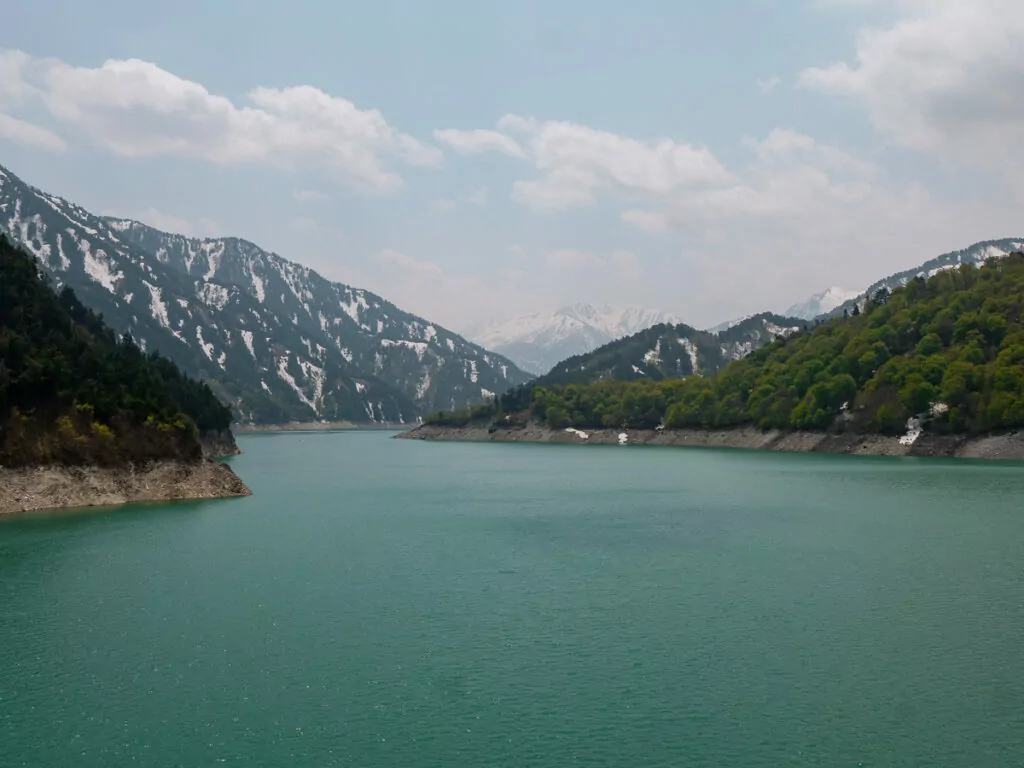
Check what attractions need to be booked in advance
Some of Japan’s bucket list experiences require advance reservations to secure your spot, like Shibuya Sky at sunset, TeamLabs, Ghibli Museum, Nintendo Museum and the Suntory distilleries. Some have specific days when they release tickets (e.g. three months in advance), some are just available until they sell out.
Write a list of your absolute must-dos, research if they need to be booked ahead of time, and lock them in.
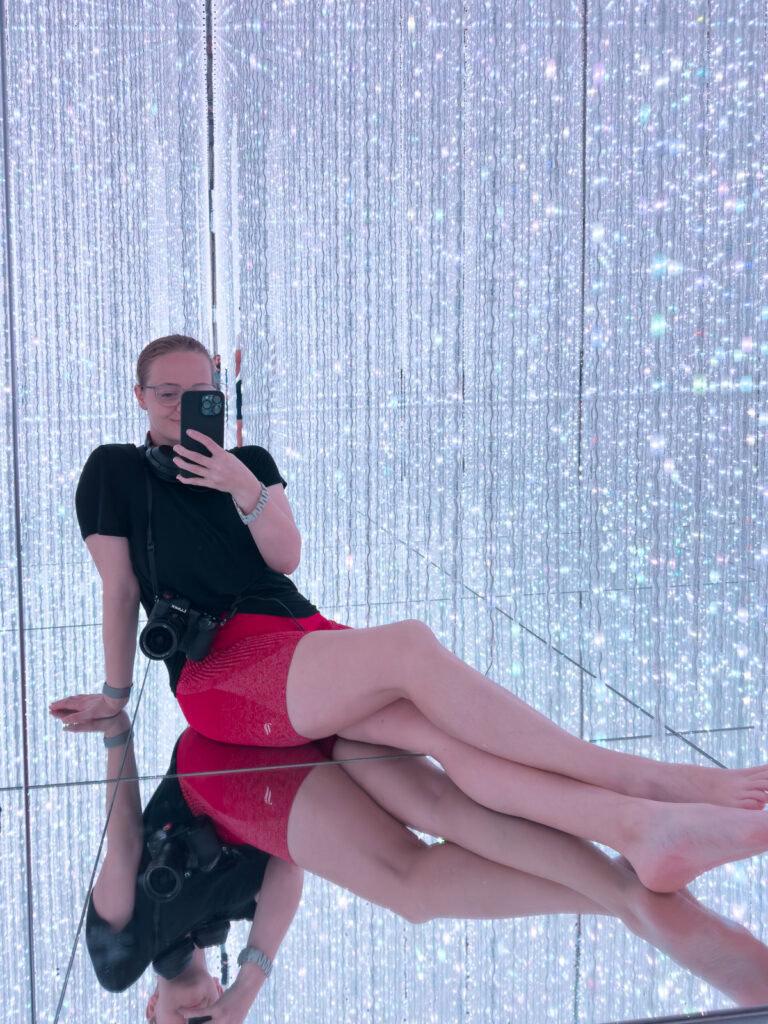
Getting around Japan solo
Incredibly efficient and punctual? Yes. Completely overwhelming at first glance? Also yes.
Getting from A to B in Japan is super smooth once you get the hang of it, but it certainly has a bit of a learning curve. Here are some top tips to help you hit the ground running.
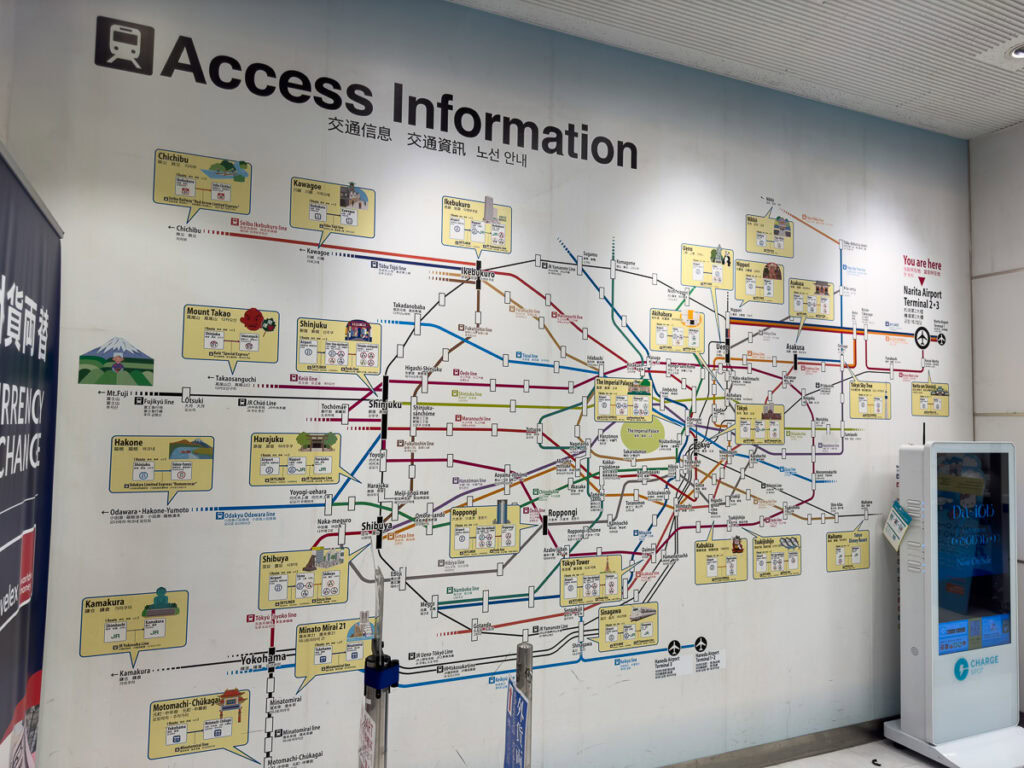
Trains in Japan
The most popular way for solo travellers to explore Japan! A few vital pieces of information will help you understand Japan’s train network:
- There are lots of different operators. JR (Japan Railways) runs all shinkansen (bullet trains) and lots of other train lines between/within cities, and there are lots of smaller private companies that operate scenic routes, local trains, limited express trains, and metro/subway lines.
- Different companies might have their own stations with the exact same name. If you’re transferring between railway companies, you’ll need to exit through the ticket gates and re-enter through the other company’s gates, which might be one minute around the corner or might be a 10 minute walk down the road.

- Train ticket prices are static, not dynamic (i.e. they don’t increase with demand like most long-haul trains in Europe). You can get discounted prices on some shinkansen lines if you book 21 days in advance though, more info here.
- Shinkansen trains run frequently and generally don’t sell out, so you can just get to the station whenever it suits you and buy tickets at the machine for the next departure. The exception to this is if you’re visiting during holidays (like Golden Week), if you are desperate for a window seat for Fuji viewing, or if you need an oversized baggage reservation.
- Eating on trains is totally fine when there’s a tray table in front of you (like on the shinkansen and some limited express trains), if there’s no tray table (like on slow regional trains, local trains and subway) then it’s considered rude to eat.
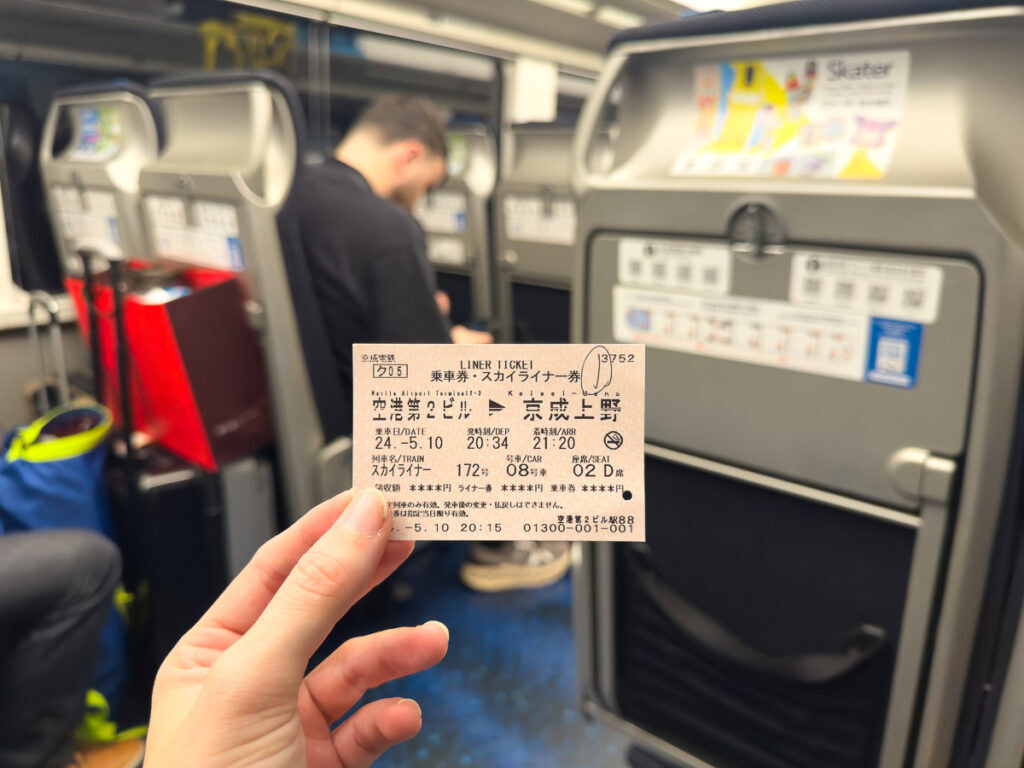
Buses in Japan
Trains and subways dominate in major cities like Tokyo and Osaka, but buses are commonly used by tourists in Kyoto, Hiroshima, Kanazawa and remote onsen towns.
Buses are run by different companies and they all do things slightly differently, these are the main things to know before you bus anywhere.
- On most buses in Japan you board at the back door and exit at the front
- On city buses you can generally pay with an IC card or cash. Rural buses, buses between onsen towns or tourist buses like to the Snow Monkey Park might require prepaid tickets from the station, and they might only take cash.
- If the bus has a flat fee, just tap your IC card/pay cash to the driver when you get off
- If the bus has variable fees (based on distance), either tap your IC card when you get on and off, or get a ticket from the machine at the door where you board, then put this in the box next to the driver when you exit and pay in cash or with your IC card
- Most city buses in Japan have signs that say “no large luggage allowed”, and if you try to bring a big suitcase onto a busy commuter bus, you might be frowned at or asked to get off (especially during rush hour)
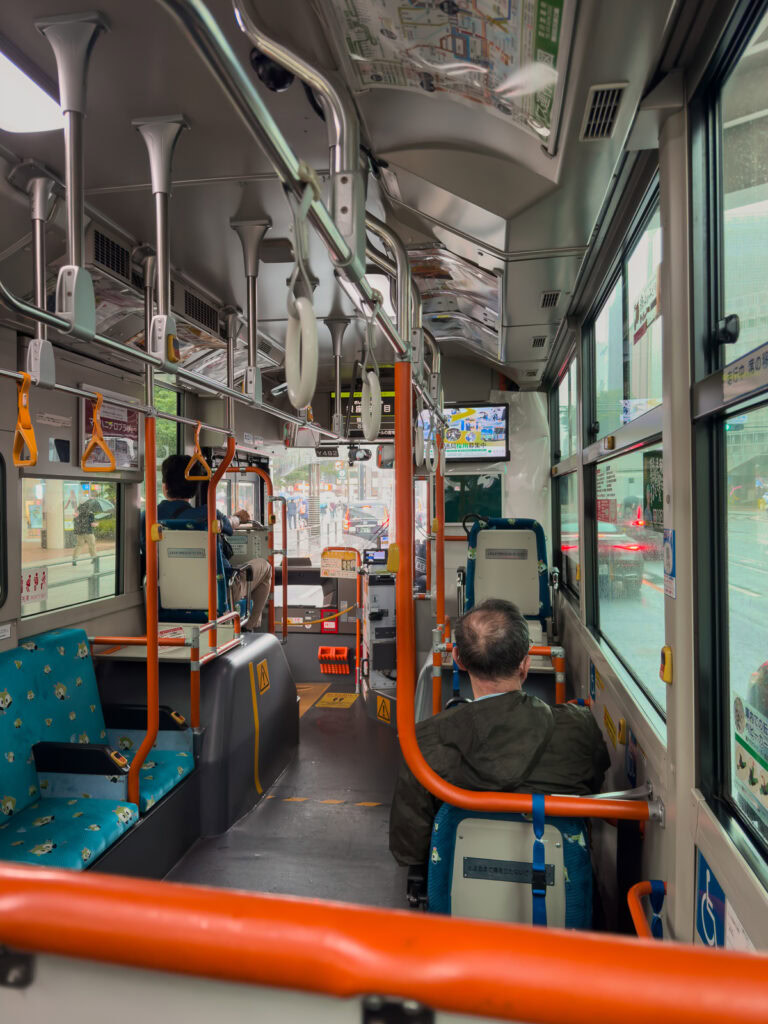
Payment options
- Get an IC card immediately! IC cards are rechargeable public transport cards that work on trains, buses, even in shops and at vending machines all around the country. ICOCA, PASMO and Suica are the main ones, they all work in the same way with the same coverage so it doesn’t matter which one you get.
- You can get physical IC cards at the airport on arrival or at major train stations, or if you have an iPhone you can add a digital IC card to your Wallet, even before you go. Open Wallet, tap the ‘+’, tap ‘Transit Card’, scroll down to Japan and choose the one you want.
- You can load money onto your physical or digital IC card at the machines at any train station, some machines are cash-only but some will accept card.
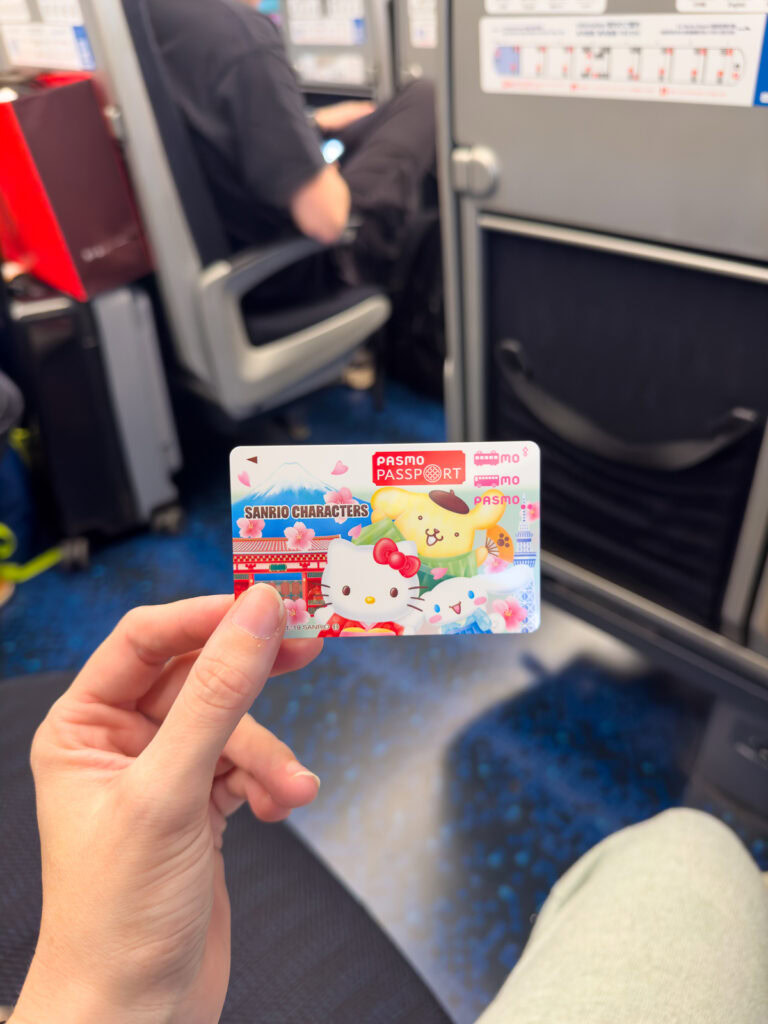
- You can also top up your digital card using Apple Pay straight from your Wallet but this seems to only work with certain cards, my Visa/Mastercard debit cards didn’t work but my Amex worked fine.
- Some limited express trains require an extra supplement (separate ticket) on top of the base fare, which can be purchased at ticket machines.
- If you bought a ticket in advance and accidentally underpaid (like if you got on the wrong train or got off at a later station), simply find a Fare Adjustment machine or counter, show them your ticket and they’ll figure out how much you need to pay. I had to do this a couple of times and they were always friendly and helpful.
- Major JR stations often have ticket offices for foreign tourists with English-speaking staff, head there if you have any trouble.
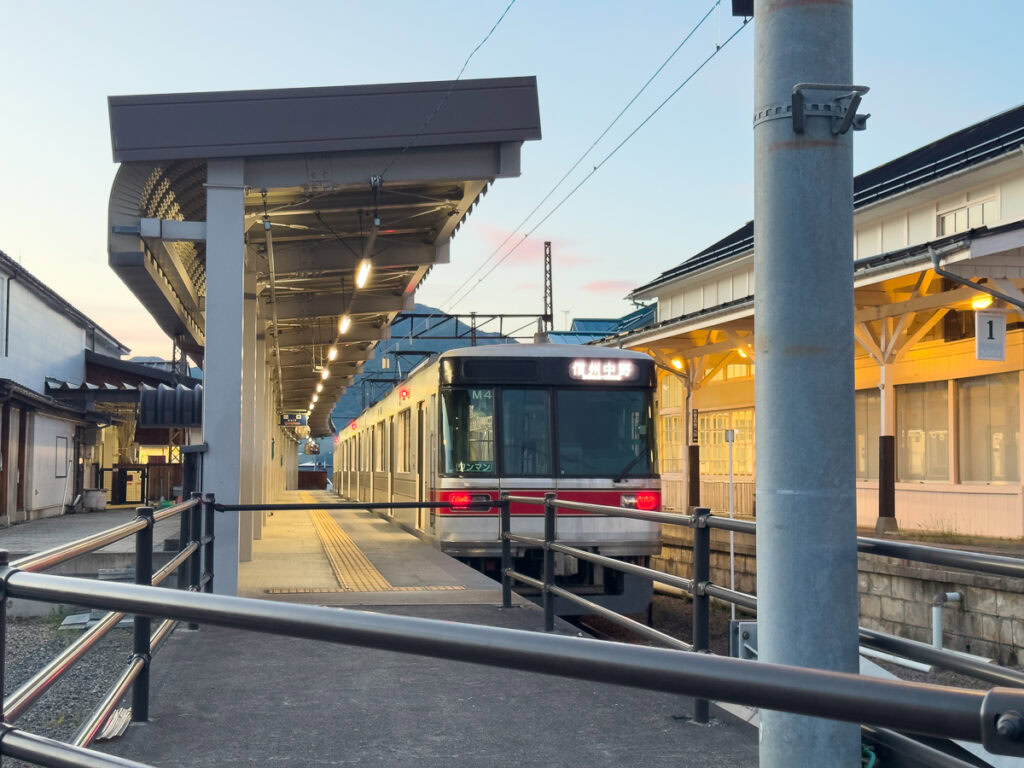
Navigation tips
- Google Maps is ESSENTIAL. It shows the symbol of the train line so you can match it with signs in the station, the station number for metro lines, the type of train (local/rapid/express etc.), the best boarding position for a speedy exit or transfer, and the best entrance or exit to use.
- Make sure you take the right exit. If you take the wrong exit out of a subway station in Tokyo you could end up a 20 minute walk from where you wanted to be 🙃 Trust Google Maps and find the exit it tells you to take.
- Most stations have signs in English but station staff are very helpful if you need it, even via Google Translate.

Solo travel Japan itinerary ideas: 1-4 weeks
One of the beautiful things about solo travel is that you can design your itinerary entirely around your own interests and preferred travel pace, so I’m not going to tell you exactly what to do, but here are some realistic timeframes and routes to give you a starting point.
One week in Japan: The Golden Route (Tokyo, Fuji & Kyoto)
This iconic route covers the trifecta of Japan’s tourism highlights: the buzzing metropolis of Tokyo, the legendary Mount Fuji and the historical gem of Kyoto. It’s fast-paced but it covers the absolute must-sees for first-time visitors.
- Fly into Tokyo
- 2-3 days in Tokyo
- 1-2 days in the Fuji area
- 2-3 days in Kyoto
- Fly out of Osaka
Spend more time in Tokyo if you’re a big city traveller or more time in Kyoto if culture is more your vibe.
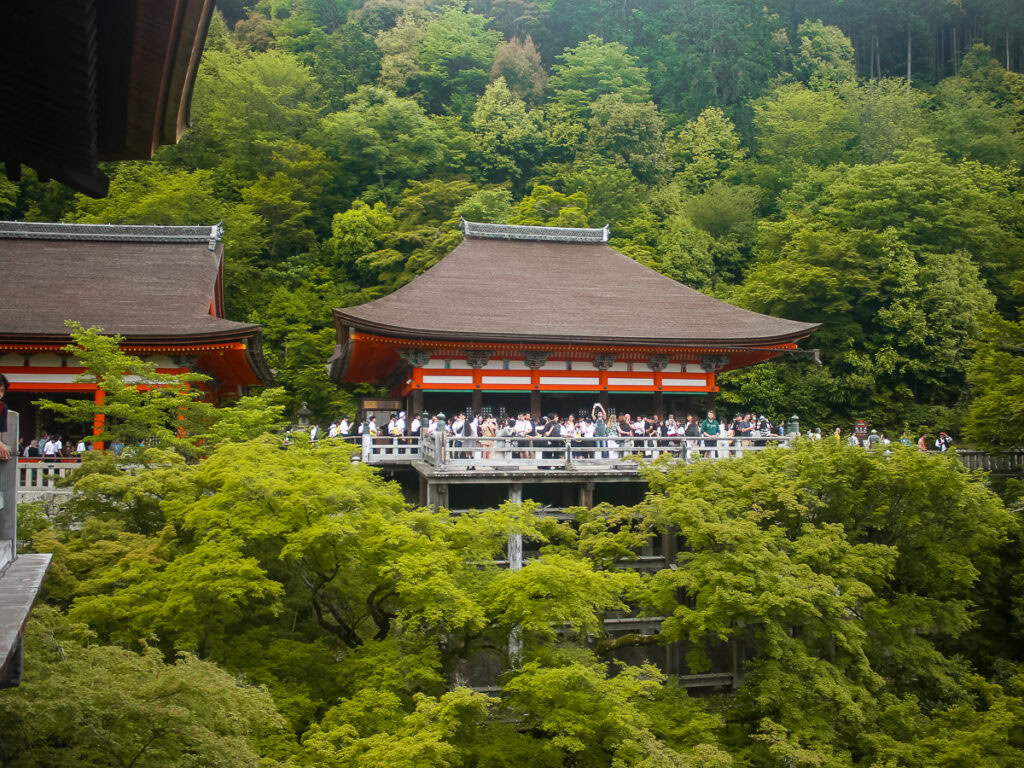
And some solo-friendly accommodation recs:
- Tokyo: Plat Hostel ($), Resol Poshtel ($), House Ikebukuro ($$), Hotel Vista Tsukiji ($$), lyf Shibuya Tokyo ($$$)
- Fuji area: Kagelow Hostel Kawaguchiko ($), Fujiyoshida Youth Hostel ($), HakoneHOSTEL1914 ($$), Toyoko Inn Fuji Kawaguchiko ($$), Mizno Hotel ($$$)
- Kyoto: Tsukimi Capsule Hotel ($), Ryokan Hostel Gion ($), Hop Inn Kyoto Shijo Omiya ($), The OneFive Kyoto Shijo ($$), Hotel Resol Kyoto Shijo Muromachi ($$), Tomoya Residence Hotel ($$$)

Two weeks in Japan: Add Osaka & Hiroshima
With a bit more time up your sleeve you could slow down the Golden Route, and add the foodie favourite Osaka and historically significant Hiroshima.
- 3-4 days in Tokyo
- 1-2 days around Fuji
- 3-4 days in Kyoto
- 2-3 days in Osaka
- 2-3 days in Hiroshima + Miyajima Island
This pace gives you time to add on day trips or extended stops between bases, like Nara, Himeji and Kamakura.
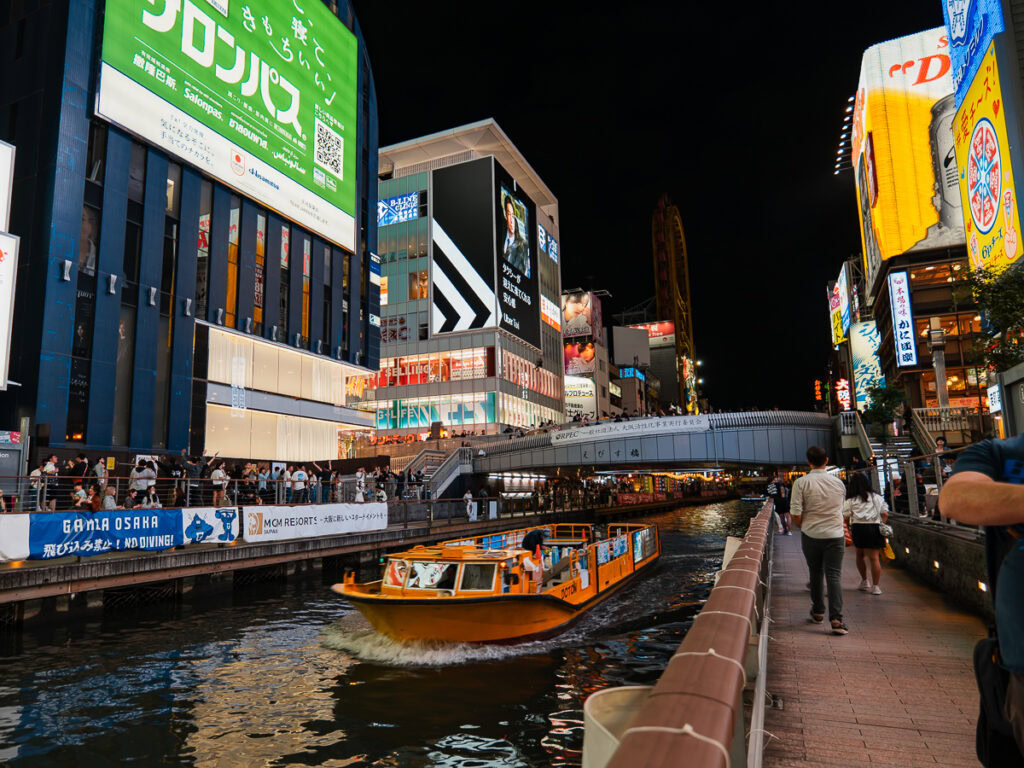
Solo travel accommodation options for the add ons:
- Osaka: Ninja & Geisha ($), Hostel Caranashi ($), Hotel Noum OSAKA ($$), Sotetsu Fresa Inn Osaka Shinsaibashi ($$), Hotel It Osaka Shinmachi ($$$)
- Hiroshima: Capsule Hotel Cube ($), Roku Hostel ($), Hotel Vista ($$), Rihga Royal Hotel ($$), Nest Hotel Ekimae ($$)
🗾 AWARD-WINNING TWO WEEK TOUR: If you’re heading to Japan solo but would prefer seeing the country with an expert guide and ready-made travel buddies, I highly recommend the 14 day Japan Classic tour with the legends at One Life Adventures. It covers all the spots above as well as Takayama & Koyasan, includes loads of fun activities like sushi making and Kendo class, and was genuinely one of the most epic tours I’ve ever done. Read my full tour review here >>
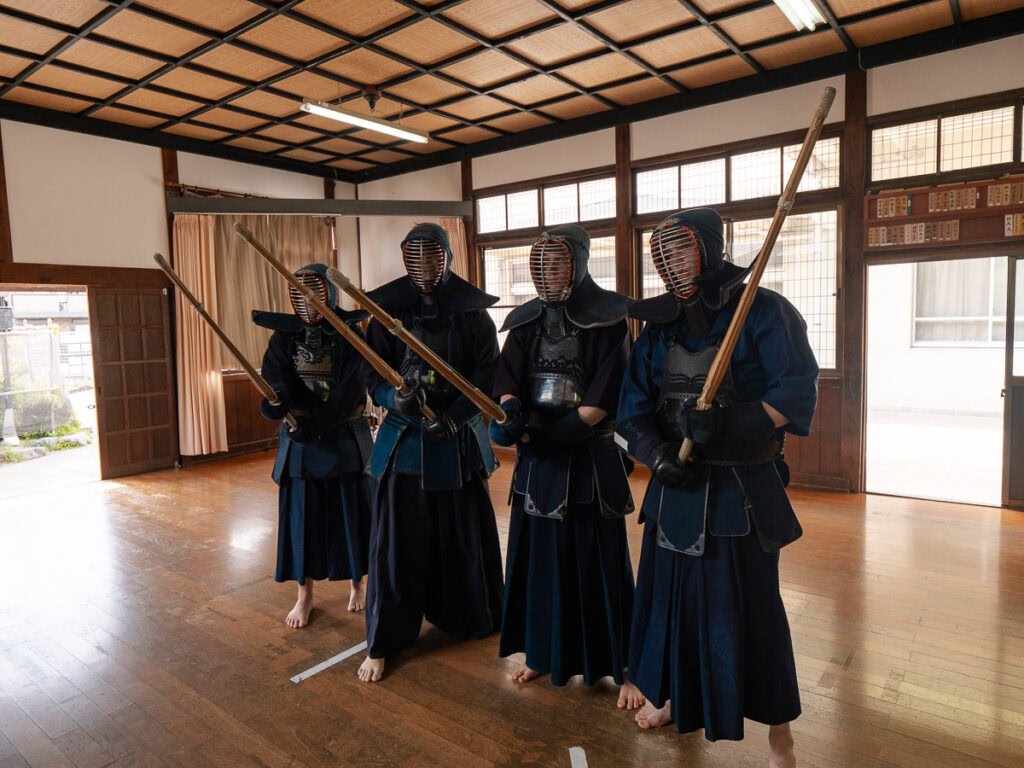
Three weeks in Japan: Add more of Old Japan
Three weeks in Japan gives you enough time to add the beautiful mountain town of Takayama and charming Kanazawa, known as “Little Kyoto”, which are two of my favourite places in the country. Shirakawa-Go is an easy add on for a day trip or overnight stay between the two, I didn’t make it there but I’ve heard good things.
- 3-5 days in Tokyo
- 1-2 days around Fuji
- 2-3 days in Takayama
- 1-2 days in Shirakawa-Go
- 2-3 days in Kanazawa
- 3-5 days in Kyoto
- 3-4 days in Osaka
- 2-3 days in Hiroshima + Miyajima Island
With three weeks of exploring you need to add in some rest days for sure, I’ve extended the recommended stay in Tokyo, Kyoto and Osaka as suggestions but you could add those days anywhere that suits.
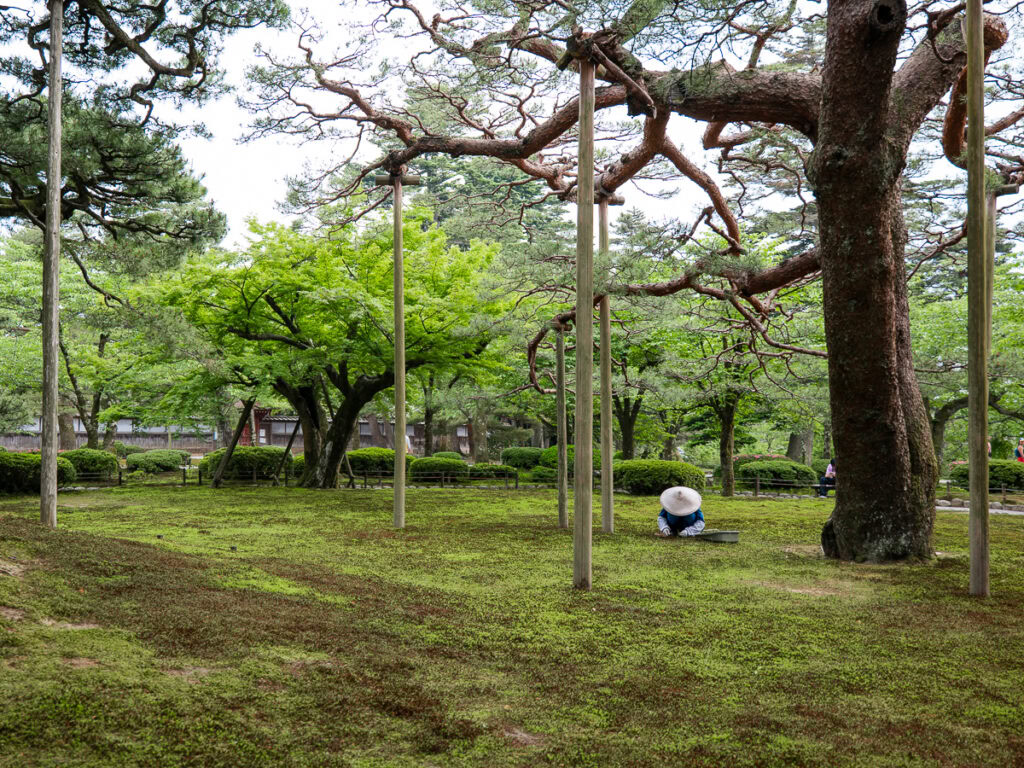
Accommodation recs for solo travellers:
- Takayama: Sakura Guest House ($), Guest House Ouka ($), Residence Hotel ($$), Hotel Wood ($$), SOY ($$$)
- Shirakawa-Go: Guest House Kei ($), CURIO ($$), Onyado Yuinosho ($$$)
- Kanazawa: Torifito Hotel & Pod ($), Guesthouse Stella ($), LINNAS Hotel ($$), Hotel Sanraku ($$$)
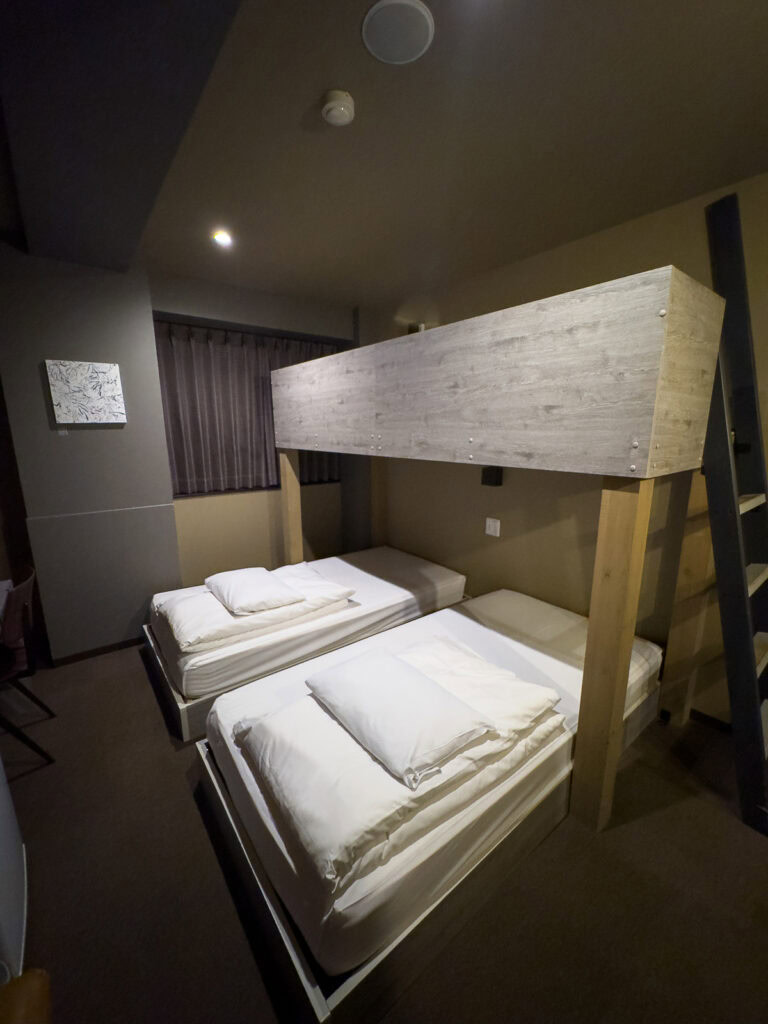

Four weeks in Japan: Add monkeys, the Japanese Alps, Himeji & onsen time
All of the above plus the famous snow monkeys of Jigokudani Monkey Park, the super scenic Tateyama Alpine Route through the Northern Japanese Alps, an overnight stop in Himeji and some dedicated onsen time for rest and recovery from an insanely epic holiday.
- 4-5 days in Tokyo
- 2-3 days around Fuji
- 1-2 days Yudanaka (closest town to the monkeys) or Nagano (big city 1h 10m from the monkey park)
- 1-2 days for the Tateyama Kurobe Alpine Route (can be done in a day trip or stay one night along the route)
- 2-4 days in Takayama
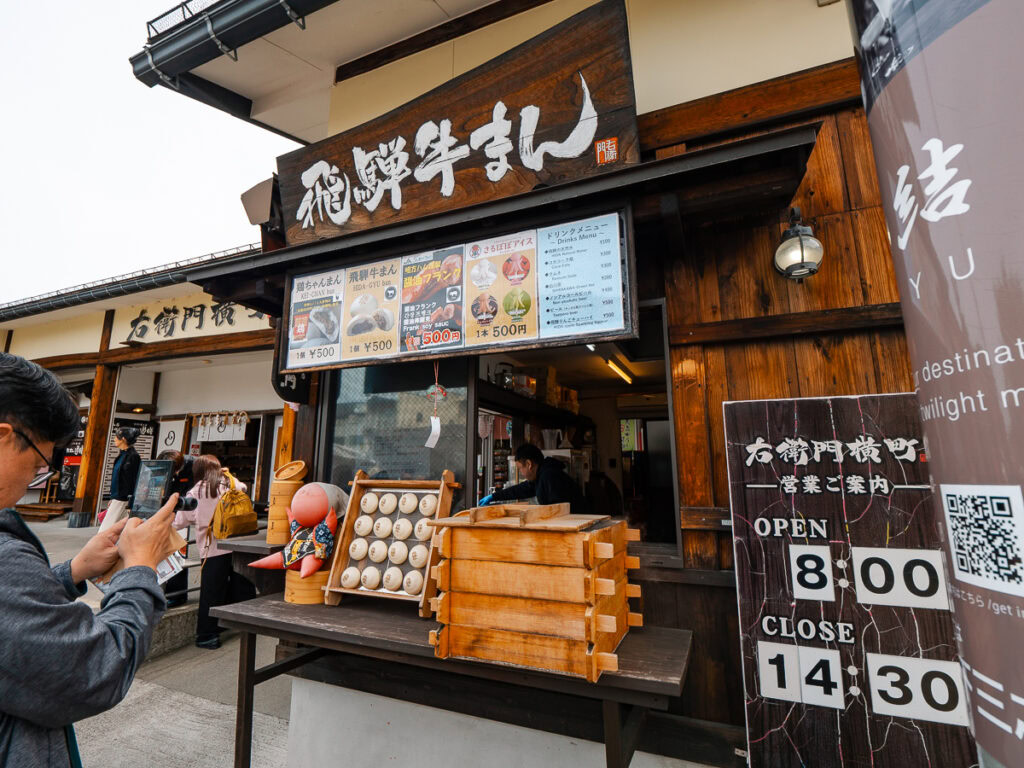
- 1-2 days in Shirakawa-Go
- 2-4 days in Kanazawa
- 4-5 days in Kyoto
- 3-5 days in Osaka
- 1-2 days in Himeji
- 2-3 days in Hiroshima + Miyajima Island
- 1-2 days at an onsen town of your choice
If you don’t mind a fast-paced trip you could easily pack this itinerary with things to do each day, and if you prefer taking it slow then use the extended stays in some cities to build in dedicated downtime.
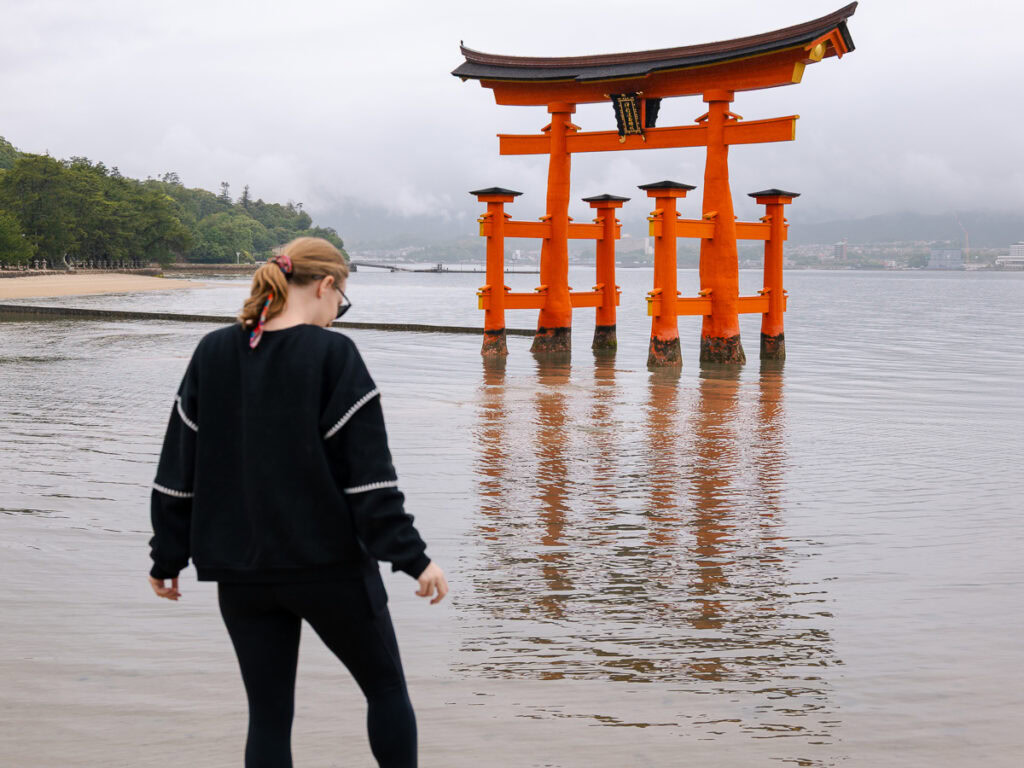
Solo travel accommodation options:
- Yudanaka: Shibu Onsen Koishiya Ryokan ($), AIBIYA ($$), Ryokan Hakura ($$), Kamei no Yu ($$$)
- Nagano: Sotetsu Fresa Inn Nagano-Zenkojiguchi ($$), Hotel NewNagano NeXT ($$)
- Tateyama Alpine Route: Yosuga Toyama ($), Locomotion Coffee & Bed Tateyama ($), Tateyama Kurobe Alpine Route Senjuso ($$), Tengudaira Mountain Lodge ($$$)
- Himeji: Himeji 588 Guest House ($), Richmond Hotel ($$), Dormy Inn Himeji Natural Hot Spring ($$)
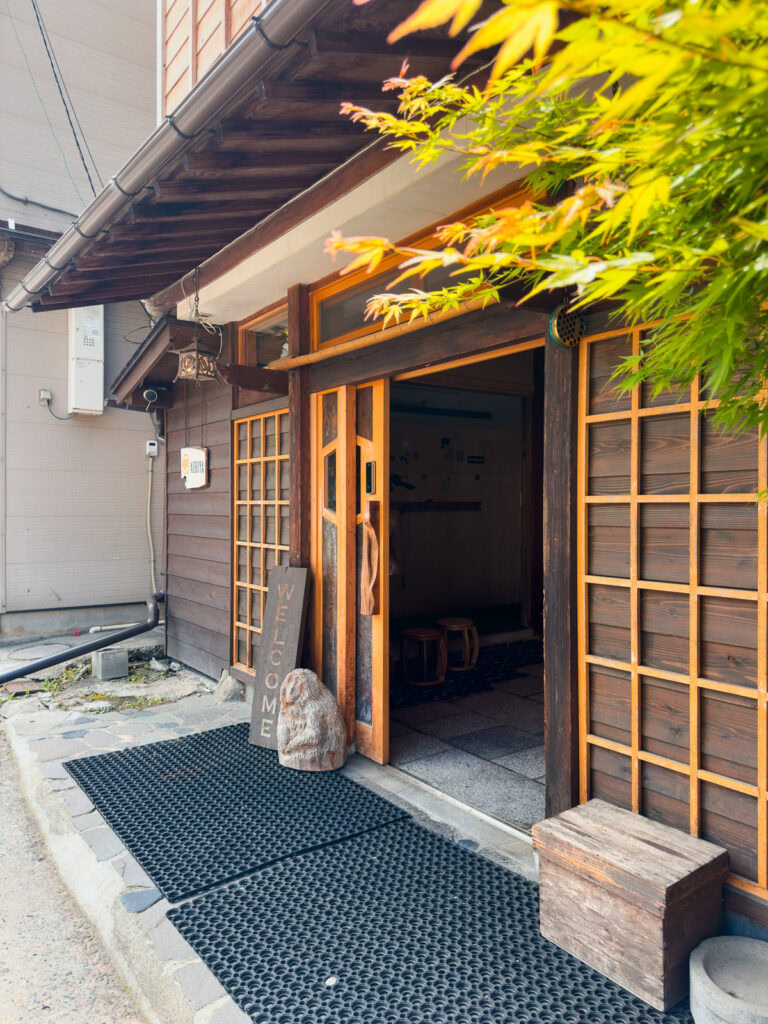
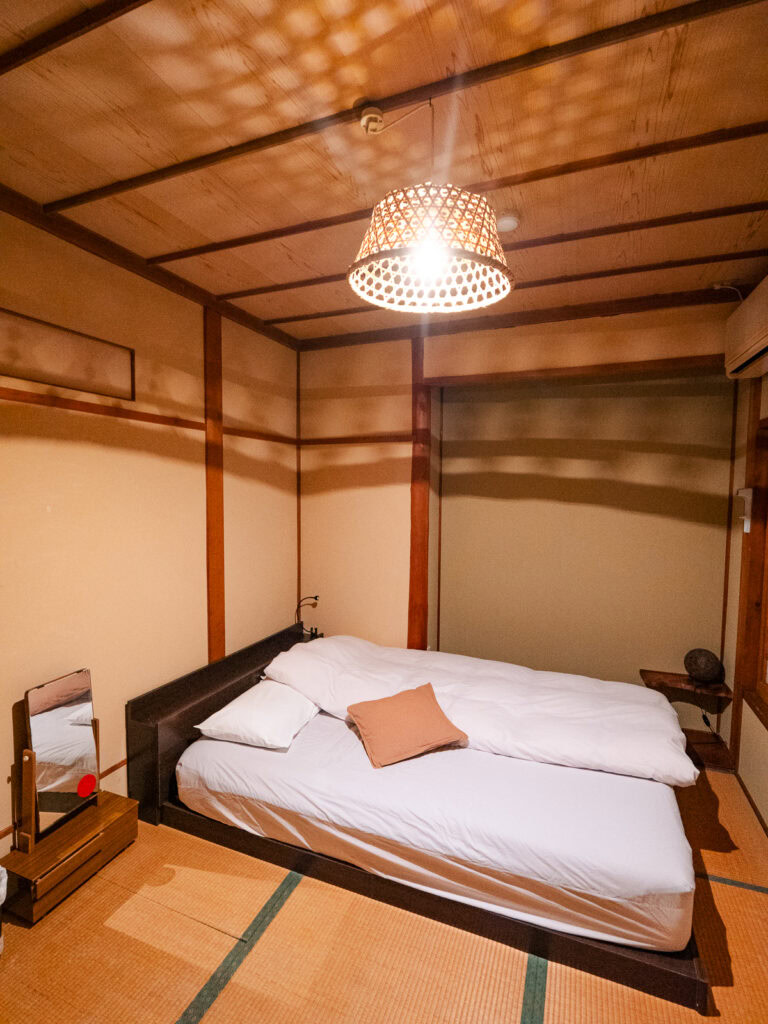
How much does a solo trip to Japan cost?
Japan has a reputation for being an expensive destination, but the historically weak yen has made it much more affordable for international travellers. Combine that with a decent range of budget-friendly accommodation, cheap eats and free/low cost activities and the total cost of your solo Japan trip might end up pleasantly surprising you.
Here is a realistic breakdown of what you can expect to spend each day, based on shoulder season, booking a few months in advance. Less touristy areas might be a little cheaper, big cities and popular spots will be on the higher end of the scale.
Solo travel on a budget: $35-100USD
- Accommodation: $15-40USD (hostels, capsule hotels, single ryokan rooms with shared bathrooms)
- Food: $15-20USD (convenience store meals & affordable local eateries)
- Transport: $5-10USD for city transport each day, $40-90USD per intercity shinkansen depending on distance/speed
- Activities: $0-20USD (temples, gardens, free walking tours, arcade games, window shopping)

Mid-range solo travel (or in-between travel as I like to call it): $100-250USD
- Accommodation: $40-100USD (private en suite rooms at nice ryokans, affordable 3-4* hotels)
- Food: $20-40USD (mix of cheap eats and higher end dining)
- Transport: As above, depends on itinerary
- Activities: $20-60USD (mix of free/cheap stuff plus a few more expensive things like guided tours, TeamLabs, theme parks, day trips etc.)
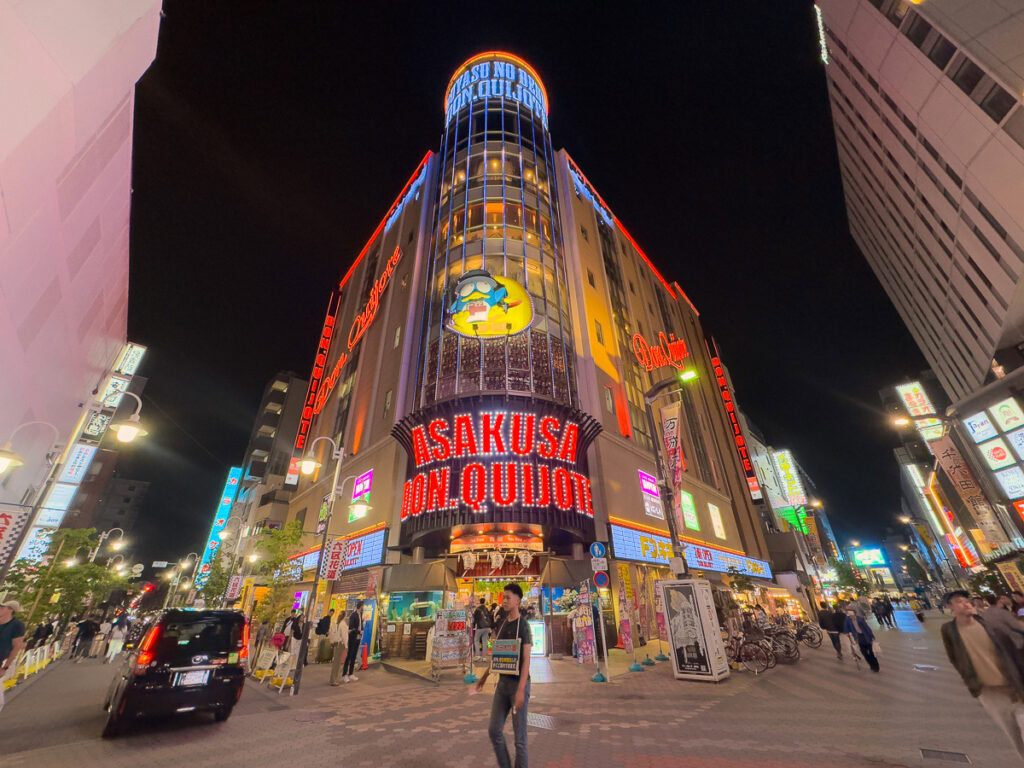
Luxury solo travel: $350USD+
- Accommodation: 5* hotels from $100USD+ for less touristy places, $150USD+ for Tokyo & Osaka
- Food: $50+ USD (nice restaurants for all meals)
- Transport: 40-50% more for Green Class (business class) shinkansen tickets
- Activities: $150USD+ (bucket list experiences every day like sushi classes, food tours, private guides, theme park fast passes, observation decks)
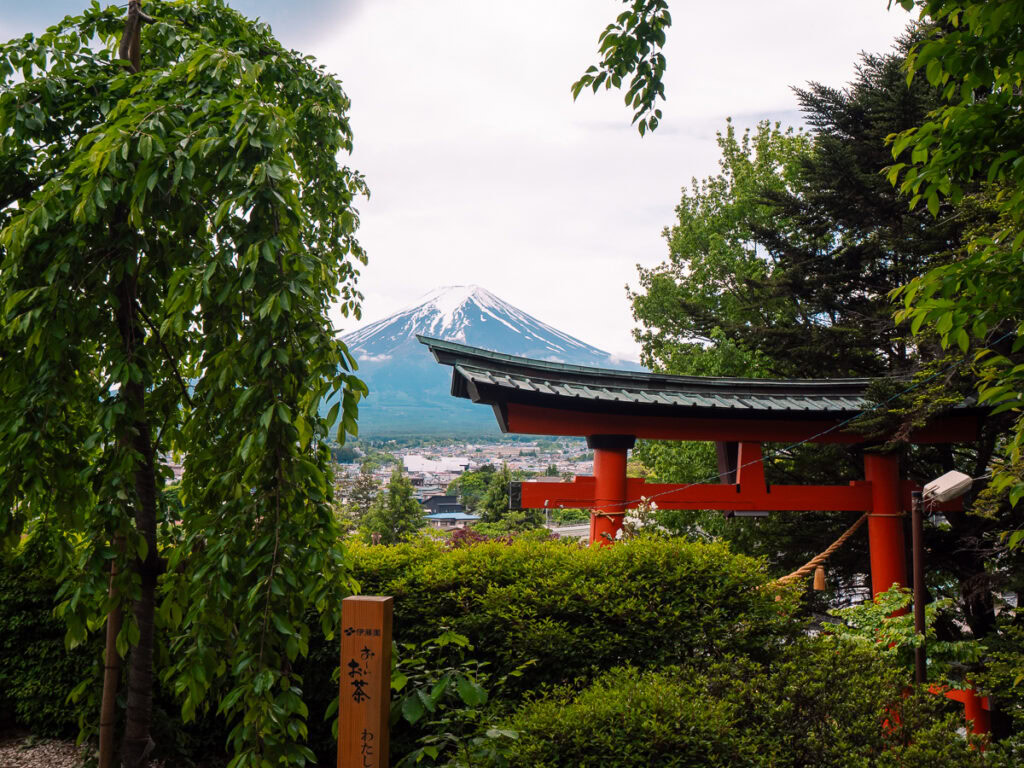
Other costs:
- eSIM: $7.99USD for 10GB, 20GB for $13.99USD, 50GB for $29.99USD, unlimited data for 15 days for $23USD
- Luggage transfer: Depends on weight but I paid ¥2000-2500 ($13.50-17USD) for a 20kg suitcase each time
- Luggage storage: ¥500-700 ($3.40-4.80USD) for a large locker per day
- Cherry blossom prices: Expect accommodation to be a lotttttt more expensive in Sakura season, anywhere from 50-300% higher than typical shoulder season prices
- Travel insurance! Read my guide on how to choose the best travel insurance policy

Tours for solo travellers in Japan
Solo travel doesn’t have to mean you’re alone all the time, there are loads of organised group tours in Japan that’ll let you explore the country comfortably without being solely responsible for all the planning and logistics. And you get the benefit of new travel buddies too!
Recommended tour: Japan Classic with One Life Adventures
On my last Japan trip I joined the 14 day Japan Classic tour with One Life Adventures, and it was absolutely ideal for solo travellers in their 20s, 30s and early 40s.
The tour covered the major hot spots (Tokyo, Hakone, Kyoto, Osaka & Hiroshima) as well as the less-visited Takayama and Koyasan, included unique experiences like temple stays and a Kendo class, and also allowed free time for independent exploring in each destination.

The majority of their travellers are solo, there’s no single supplement (you’ll be roomed with another solo traveller of the same gender) and it means you can see the best bits of Japan without endless research, stressful navigation or getting lonely. Group sizes are 22 people maximum but all my One Life tours have been 11-16 people.
This tour won TourRadar’s Tour of the Year and boasts an impressive 4.9/5 rating from 850+ reviews, so I’m not the only one who had the time of my life!
⭐ Read my complete review of the Japan One Life Adventures tour for honest insights and what to expect, and save 1japan one life 14 day% on any One Life Adventures tour when you book direct with promocode FINDINGALEXX

Other top-rated Japan tours
If you’re outside of the 18-45 year old age bracket or if you’re looking for a shorter/longer/cheaper/fancier tour, here are some other well-reviewed options that are solo-friendly.
Youth tours:
- 10 day Japan Classic with One Life Adventures (4.8/5 from 2200+ reviews, same tour that I did but without the Koyasan/Hiroshima extension)
- 13 day Japan Essentials with One Life Adventures (4.8/5 from 310+ reviews, more budget-friendly with fewer inclusions and more free time)
- 13 day Japan Unrivalled with Contiki (4.9/5 from 60+ reviews, 18-35 years old with average age mid-20s, bigger group size up to 30)
- 11 day Epic Japan: Speed Trains & Street Food with G Adventures (4.5/5 from 20+ reviews, 18-39 years old, backpacker travel style & price)

All ages tours:
- 9 day All Inclusive Japan Classics with Supera (4.9/5 from 60+ reviews, all ages, premium accommodation)
- 11 day Solo-ish Japan with G Adventures (new tour so no reviews yet but I love G Adventures, their Solo-ish tours are solo travellers only, female tour guide, fun activities to bond with your group and lots of free time to do what you want)
- 21 day Absolute Active Japan with G Adventures (also a new tour, an epic adventure that includes summiting Mount Fuji at sunrise!)
- 12 day Japan In Depth with Explore! (4.7/5 from 30+ reviews, quite expensive)
💰 Save $100 on Japan tours over $1250 on TourRadar with promocode ALEXX100

FAQs about Japan solo travel
Is Japan safe for solo female travellers?
Yes, Japan is one of the safest countries in the world for solo female travellers. Violent crime is extremely rare, petty theft is almost non-existent, you can walk alone at night in major cities with no issue. The main safety consideration is potential harassment on crowded trains during rush hour but there are women-only carriages during peak commute times in most cities so use those when available.
Overall many solo female travellers feel safer in Japan than in their home countries, and it was the safest I’ve felt out of the 60+ countries I’ve visited.
Is Japan good for solo travellers?
Japan is so ideal for solo travellers! Super safe, solo dining is very normal, efficient and affordable public transport, and lots of solo-friendly accommodation like capsule hotels and small single rooms.
Is it hard to travel alone in Japan?
Travelling alone in Japan does have some challenges, but some prior research and pre-planning can help you prepare for your solo trip so you hit the ground running. The main challenges are the complex transport system, language barriers and cultural etiquette to navigate, but Google Maps, Google Translate and normal Google will save the day!
Is one week enough for Japan as a solo traveller?
One week in Japan will let you cover the Golden Route (Tokyo, Mt Fuji, Kyoto) at a fast pace, and as a solo traveller you can get around efficiently which helps maximise a short trip, but it will be full on with limited downtime or flexibility.
Two weeks in Japan is much more comfortable, that would let you add Osaka & Hiroshima (or other places you’re interested in) while allocating extra days to Tokyo & Kyoto, so you can see more, do more and rest your feet when you need to.
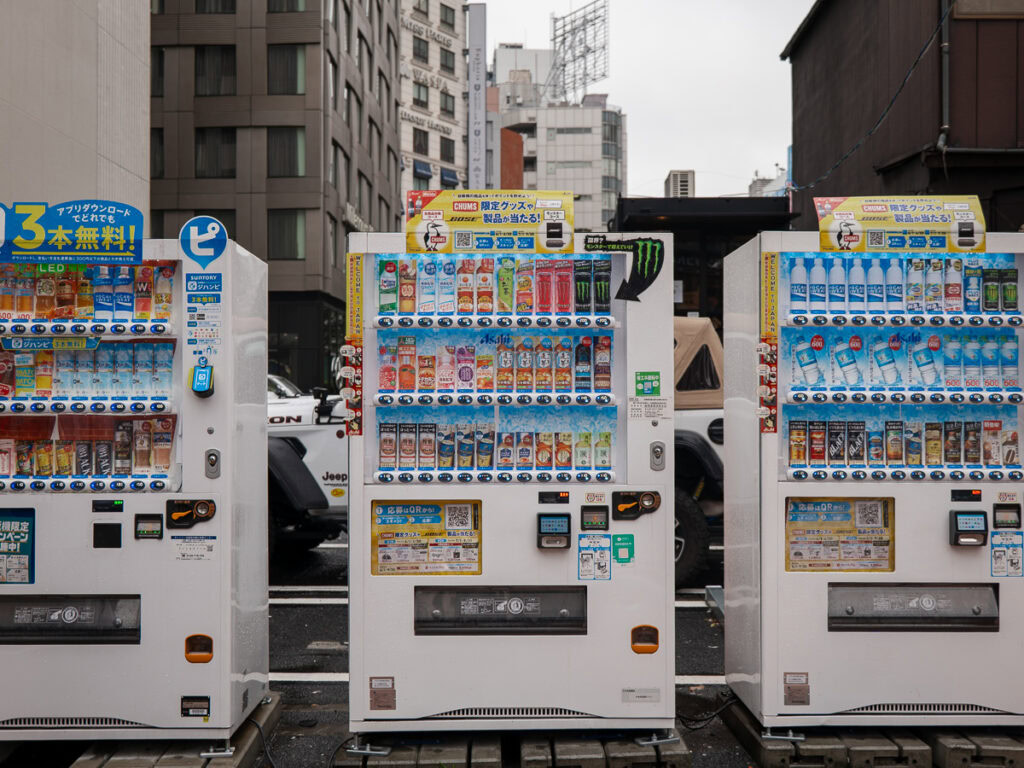
How much should I budget for solo travel in Japan?
Japan is more affordable than many travellers might expect, thanks to the Japanese yen being historically weak vs. most major currencies.
Budget solo travel can be done for $35-$100USD per day depending on the compromises you’re willing to make, mid-range travellers will probably spend $100-250USD per day for a higher standard of accommodation and more activities, luxury solo travellers could easily spend $350USD+ per day.
What’s the best time to visit Japan for solo travellers?
May (after Golden Week is finished) and September to November are the best times to visit Japan for mild weather and fewer crowds. Golden Week (late April to early May) should be avoided at all costs, June is the start of rainy season, July/August are swelteringly hot and humid.
Cherry blossom season (generally late March to early May) attracts huge crowds which means higher prices, don’t coincide your visit unless that’s the reason you’re going.
Winter travel in Japan is a whole different experience, with world-class ski resorts, steamy onsen towns, and generally fewer people at non-wintery tourist destinations.
Should I get a JR Pass for solo travel?
After the ~70% price increase in October 2023, the whole country JR Pass is not worth it for most Japan itineraries. Some regional passes can be good value if you’re using one city as a base and doing long-haul bullet train day trips, you need to calculate the price of individual tickets to compare.

Can I travel Japan without speaking Japanese?
Absolutely, but Google Translate is essential. Transport hubs have excellent English signage, most retailers and many eateries in big cities will have English menus, and Google Translate’s camera function can help you if you’re in a pinch.
English is not widely spoken in Japan outside of the tourism industry, recent studies suggest less than 30% of Japanese citizens speak some English, with less than 8% considered fluent.
Locals are very friendly and helpful though, and using Google Translate or gestures to communicate is common.
Is it okay to eat alone in Japan?
Dining solo in Japan is completely normal, in fact many restaurants have counters and booths designed for solo guests. You’ll see local business people, students and tourists alike all eating solo.
How long should I stay in Japan for my first solo trip?
Two weeks in Japan is the perfect length if you’re wanting to maximise your annual leave and travel budget, with enough time to see the main highlights at a fast pace. Three weeks lets you get off the tourist trail and add some dedicated rest days, one month allows in-depth exploring without the rush.
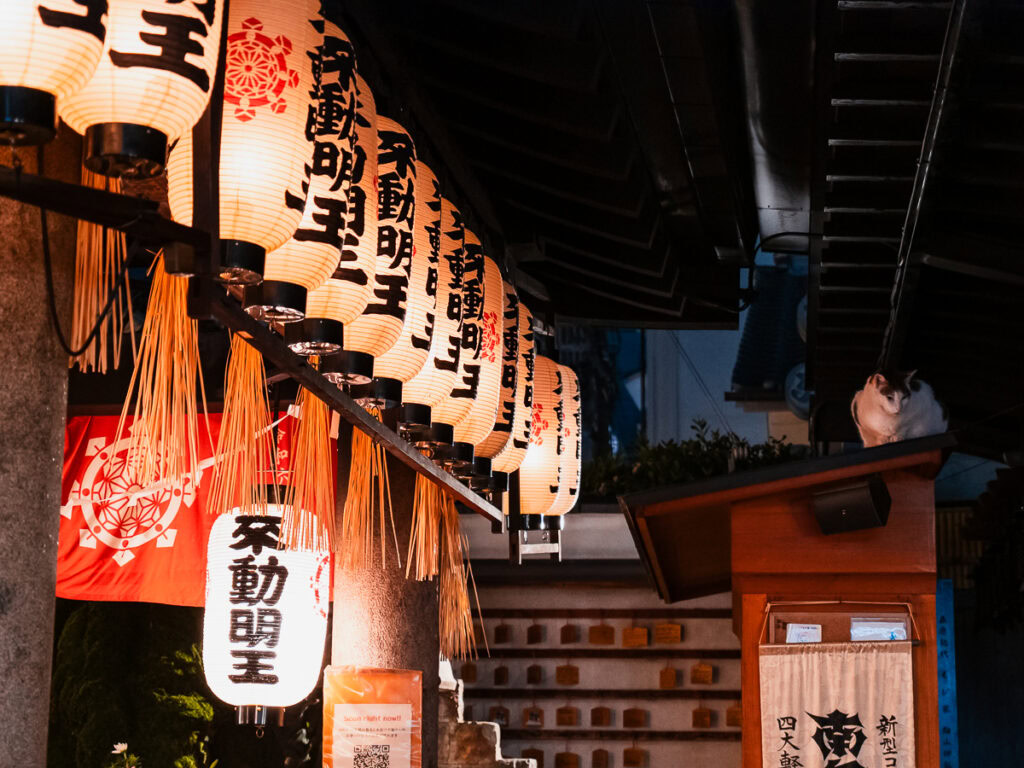
Is it safe for a woman to walk alone in Japan at night?
Yes, it’s very safe for women to walk alone in Japan, even at night in major cities. Violent crime is very rare, tourist areas are usually well-lit, you’re never far from a 24 hour convenience store if you’re concerned about someone following you. I felt completely comfortable walking alone at night in Tokyo, Osaka, Kyoto, Kanazawa, Hiroshima, Omachi, Yudanaka and more.
Always take the usual precautions (be aware of your surroundings, ensure you’ve got phone battery and data in case of an emergency etc.) but chances are you’ll feel safer here walking alone at night than you would in many other places in the middle of the day.
Where to stay in Japan as a solo female traveller?
If you’re on a budget then there are backpacker-style hostels in all major cities, as well as capsule hotels which range from cheap and cheerful to high end and fancy. Always book women-only rooms/floors if they’re available.
Staying at a ryokan (a traditional Japanese inn) is an amazing cultural experience, but not all of them offer single rooms and some might charge a hefty single supplement for a one person booking. Solo-friendly ryokan do exist, just research ahead of time to ensure you don’t run out of options, especially in small onsen towns.
Business hotel chains like Sotetsu Fresa Inn, Toyoko Inn, Dormy Inn, Tokyu Stay and Hotel Vista are undeniably soulless but generally offer good value single rooms with private bathrooms, convenient locations and typically have laundry facilities and a microwave.
Is it worth going to Japan alone?
100% yes, travelling solo to Japan is so worth it. Japan is perfectly designed for solo travel, once you know how to navigate the train system 🙃 It’s extremely safe, solo activities and dining are completely normalised, capsule hotels and single rooms are common throughout the country, and riding solo means total freedom to do whatever you want whenever you want.
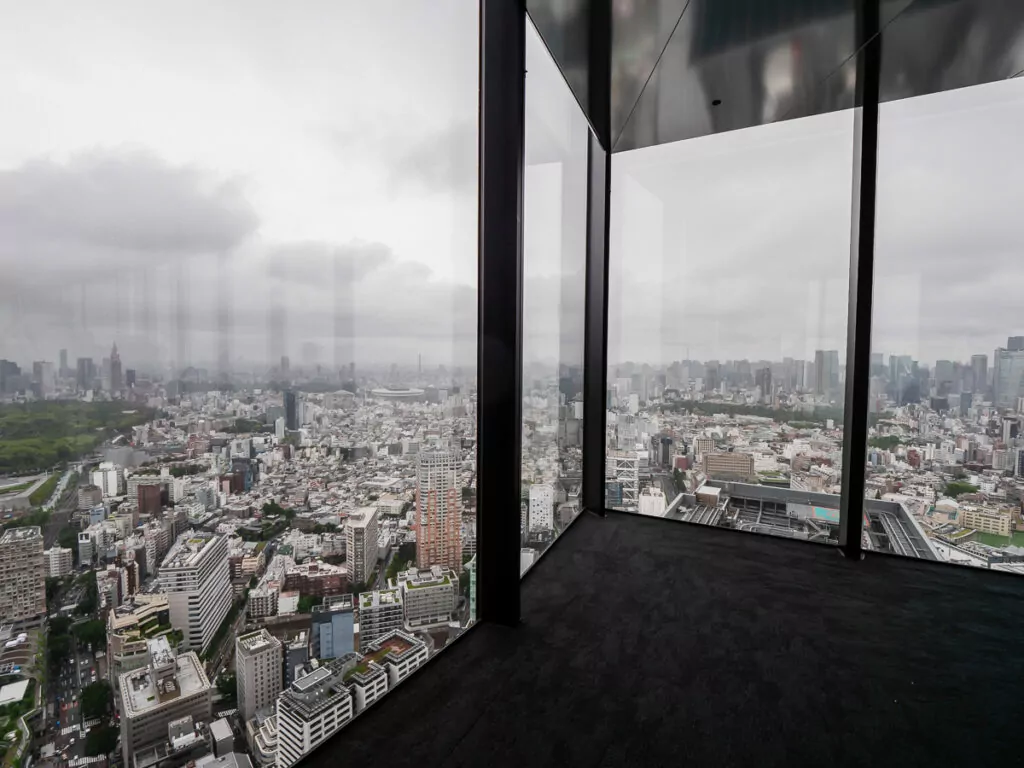
Final thoughts on travelling solo in Japan
Japan is truly a dream solo travel destination. Sure, the planning can be overwhelming to start and you’ll certainly put your navigation skills to the test, but the freedom to explore at your own pace with no compromises is absolutely priceless.
Ultra-modern train networks that connect ancient towns and mega cities, locals that will go out of their way to help you despite a brick wall of a language barrier, a society that doesn’t just accept solo people but is tailored for them, you can’t get much more solo-friendly than this.
Whether you’re there for a whirlwind first trip just to test the waters, or you’re lucky enough to have multiple weeks to get off the beaten track and immerse yourself in local culture, your solo trip to Japan will be like nothing you’ve ever experienced.
Any questions or comments about solo travel in Japan? Let me know below and I’ll get back to you as soon as I can.
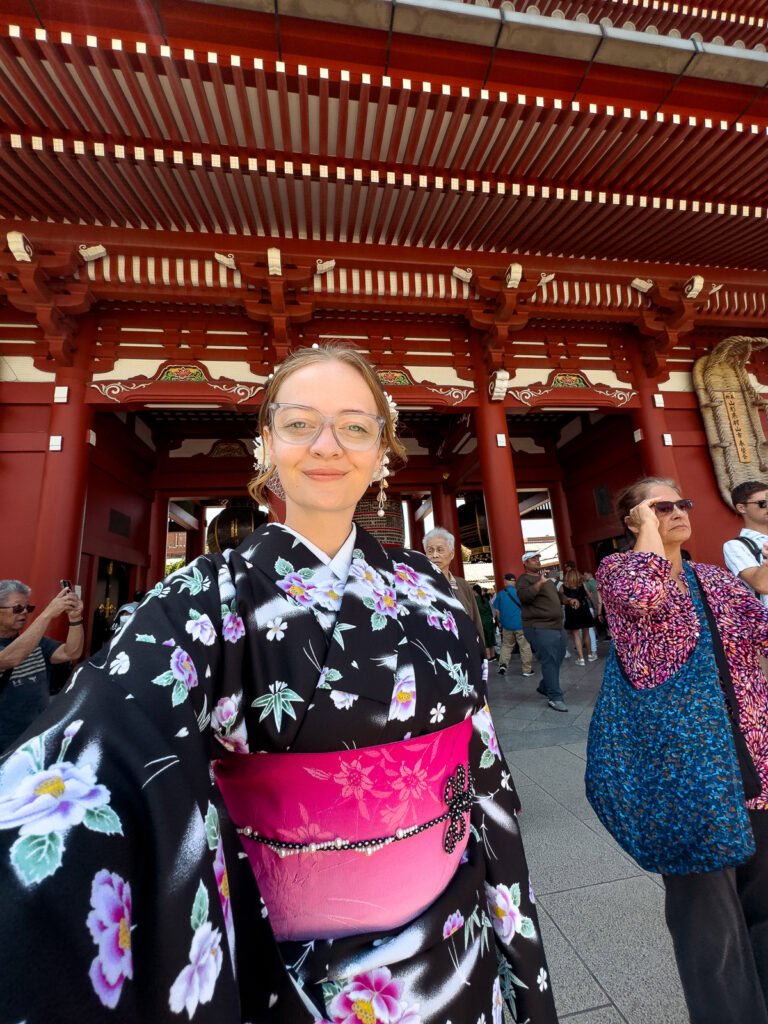
MORE JAPAN BLOG POSTS:
- Japan tour review: Two weeks in Japan with One Life Adventures
- The best Japan eSIMs: A complete guide with comparisons
MORE SOLO TRAVEL GUIDES:
- A guide to solo travel in Albania
- A guide to solo travel in Porto, Portugal
- A guide to solo travel in Amsterdam, the Netherlands
- A guide to solo travel in Edinburgh, UK
- A guide to solo travel in Copenhagen, Denmark
- A guide to solo travel in Jordan
- A guide to solo travel in the Maldives
- A guide to solo travel in Sri Lanka
- A guide to solo travel in Kuala Lumpur, Malaysia
- A guide to solo travel in Bangkok, Thailand
MY GO-TO TRAVEL PLANNING RESOURCES
Flights ✈️ I use Skyscanner to find the best flights for my trip and then I’ll always book direct with the airline to protect myself from having to deal with dodgy third parties if anything goes wrong.
Trains 🚂 If I’m travelling through Europe, I try to travel by train wherever possible! For an extended trip (2+ weeks) I’ll calculate if a Eurail Pass is worth it, or I’ll book point-to-point tickets through RailEurope or the local train operator.
Accommodation 🛎️ I book almost all of my accommodation through booking.com, they have a user-friendly website + app and many of their options are free cancellation, easily cancelled with a simple click of a button.
Activities 🗽I use GetYourGuide, Klook and Viator to look for activities in the places I visit, or I just Google ‘things to do in [city]’! P.S. If you book anything on Klook you can use the promocode FINDINGALEXXKLOOK to get 10% off
Travel cards 💳 I’m a Wise gal through and through, they’ve been my chosen travel card for more than five years now. You can easily top up your card from your bank account or through Apple Pay, convert your money to local currency, and spend money with minimal fees and the best exchange rates around.
Travel insurance 🩺 I use Cover-More NZ travel insurance for my own trips, I have a comprehensive policy and I’ve only had good experiences with them. Cover-More also has an Australian company, but if you’re from elsewhere then two popular insurance options for global travellers are SafetyWing (cheaper policy, lower coverage) and World Nomads (more expensive but significantly better coverage).
Luggage 💼 I travel with Samsonite Cosmolite suitcases, one 75cm check in bag and a 55cm carry on bag, and I absolutely adore them and will never travel with anything else! They are SUPER lightweight (2.8kg and 1.9kg respectively) so I have much more space for my actual stuff.
Camera gear 📸 I use a iPhone 15 Pro Max for phone photos/videos, and my camera kit includes a Lumix S9 (incredible lightweight full-frame camera, a game changer for travel creators!) with a 20-60mm lens, a Lumix G9 with an 8-18mm and 12-60mm lens, a DJI Mini 3 Pro drone and a GoPro Hero 10. I do all my writing and editing on my ASUS Zenbook 14, it’s lightweight but powerful enough for photo editing and intense blogging sessions.

I was looking for tips and ways to try solo travel in Japan, and I’m glad I came across your blog with such practical advice. How long did your visa process take, and is it safe to travel around leaving your passport in the hotel?
I didn’t need a visa for Japan as I was on a New Zealand passport and we have visa-free entry! Legally in Japan you have to keep your passport on you at all times, most travellers probably don’t do this but if you’re asked for it by the police and you don’t have it, they can give you a hefty fine.
Thank you Alexx for putting together such a helpful guide. I will be touring Japan solo by train from north to south (Sapporo to Nagasaki) at the end of September for 2 months. Just as you say, the amount of planning and pre-booking required has been huge, but I agree that doing so months ahead meant that I had plenty of options. I want to take advantage of the slightly cheaper 21-day in advance rail tickets whenever possible (reading your guide revealed this), and I wondered if you favoured a particular app/website for train reservations. Did you encounter any language issues when reserving tickets, or did you find an English language service perhaps?
I made all my train reservations while I was in the country so I haven’t actually used the 21 day in advance option sorry! I know you can buy Shinkansen tickets on Klook which is one of my go-to providers, however I’ve read that tickets can be more expensive there than if you buy direct so you’d need to double check that to make sure you’re getting the best price